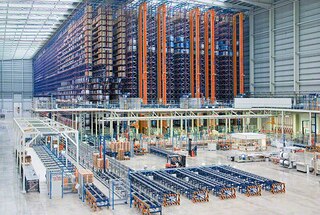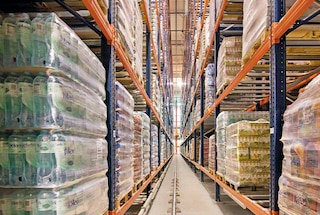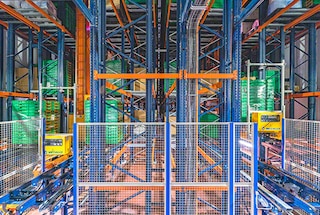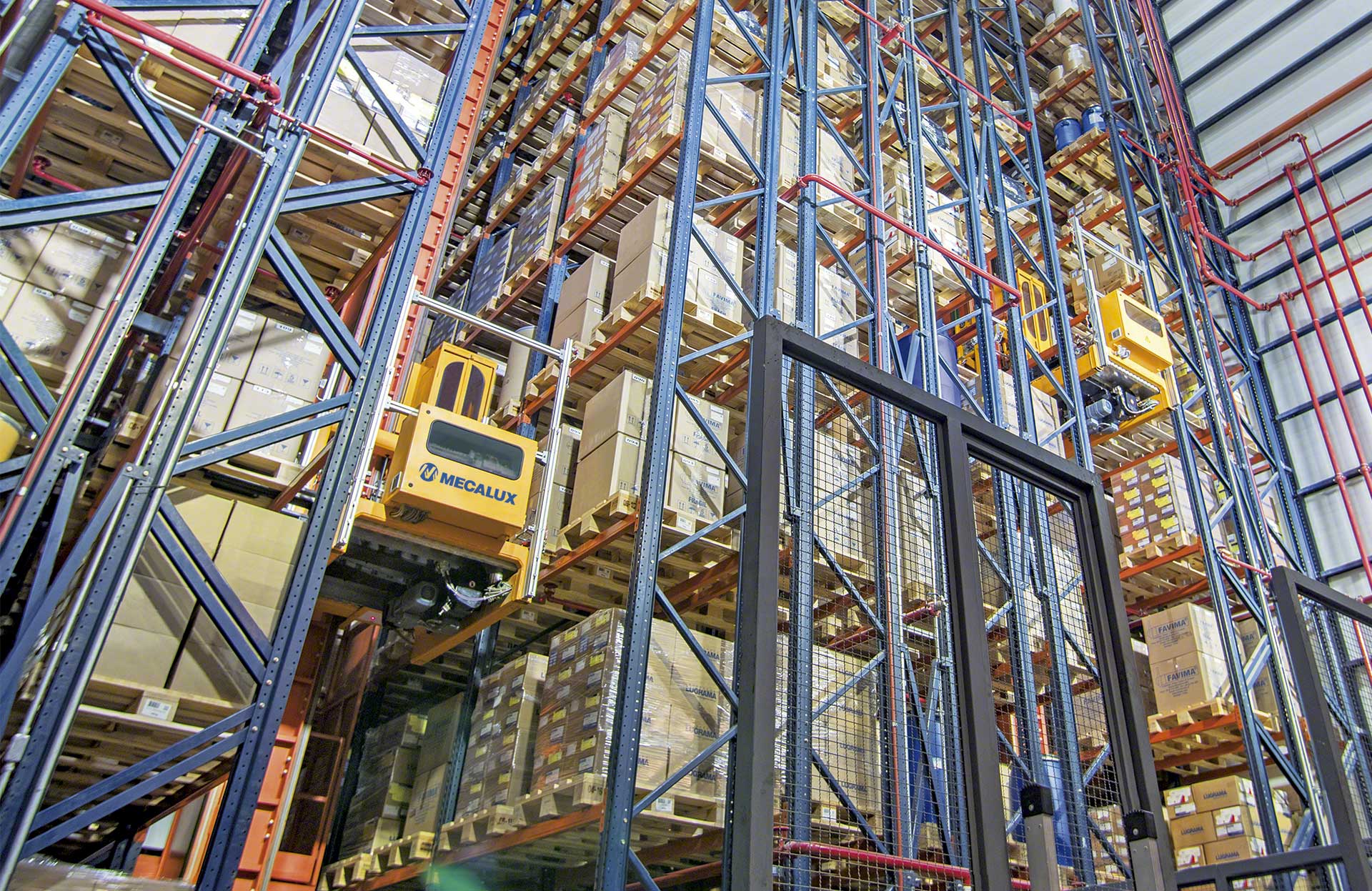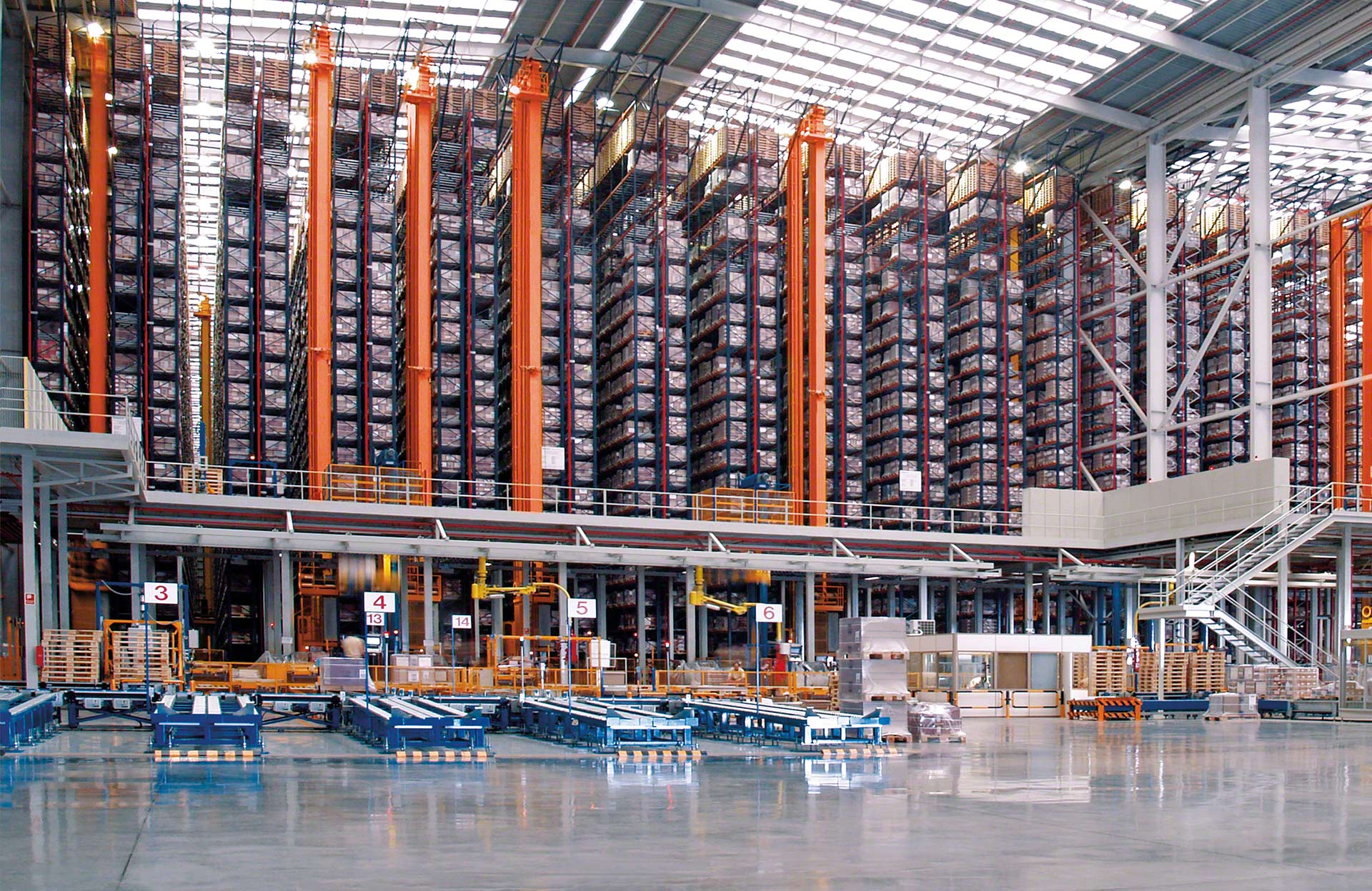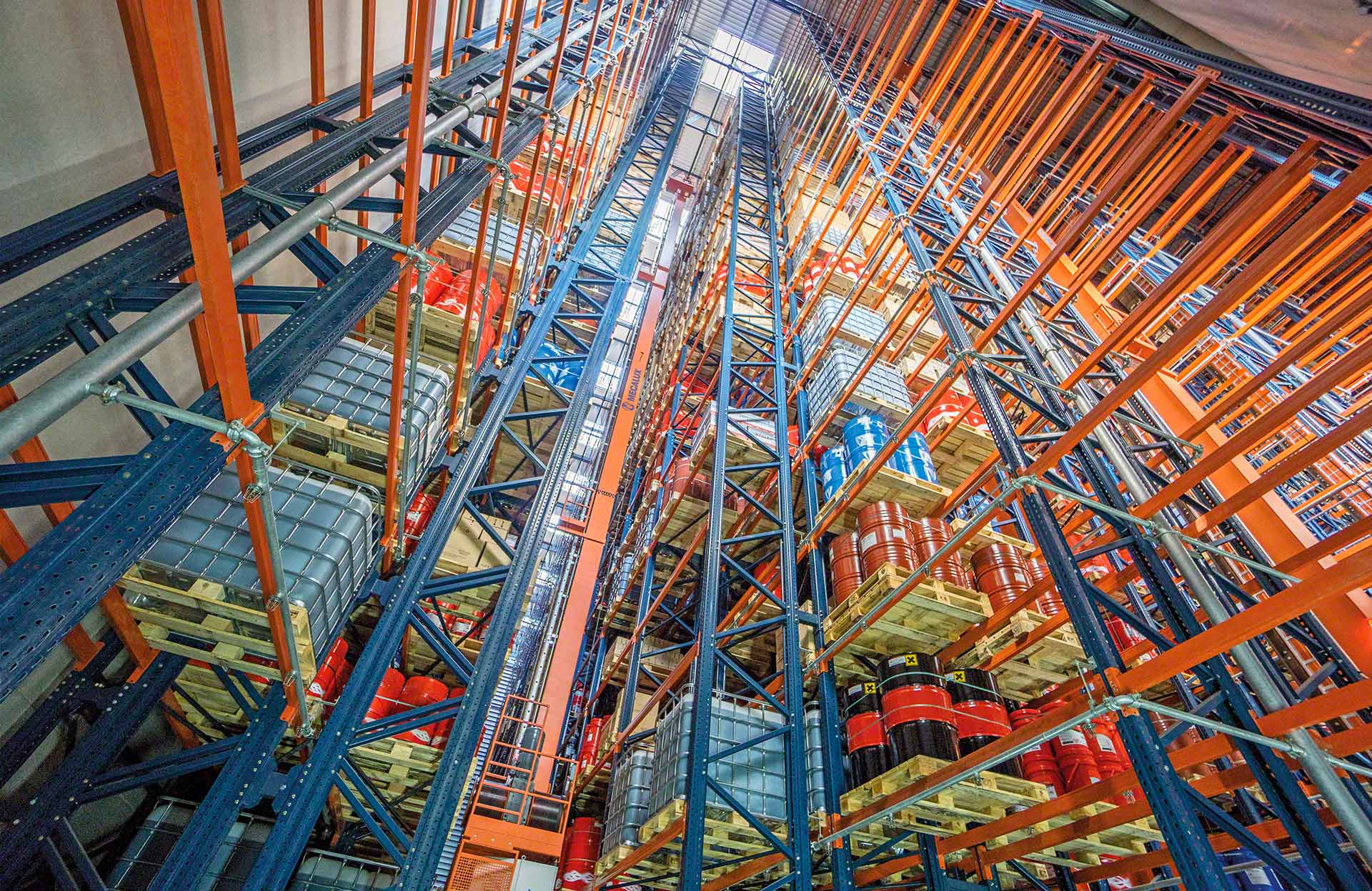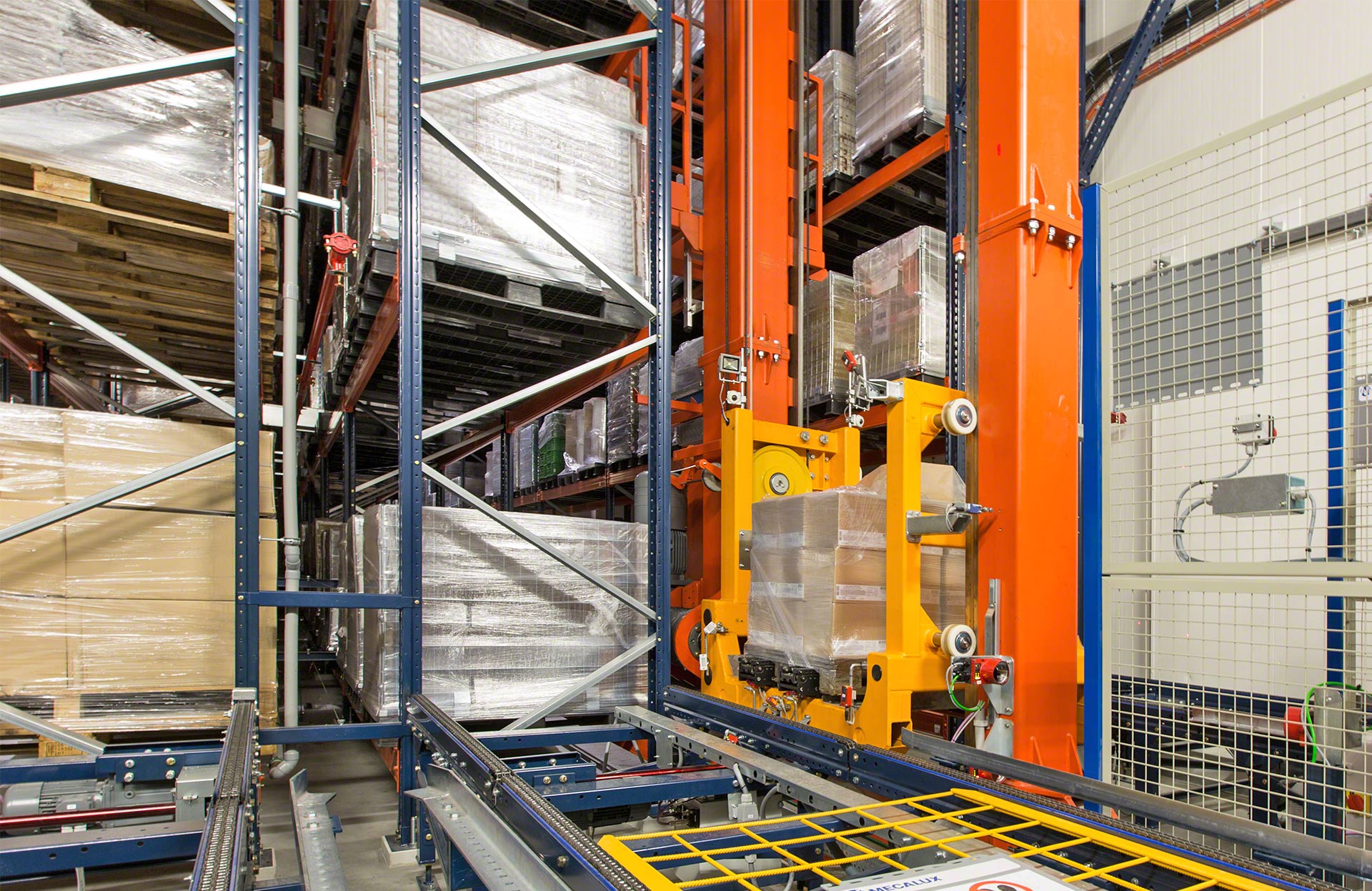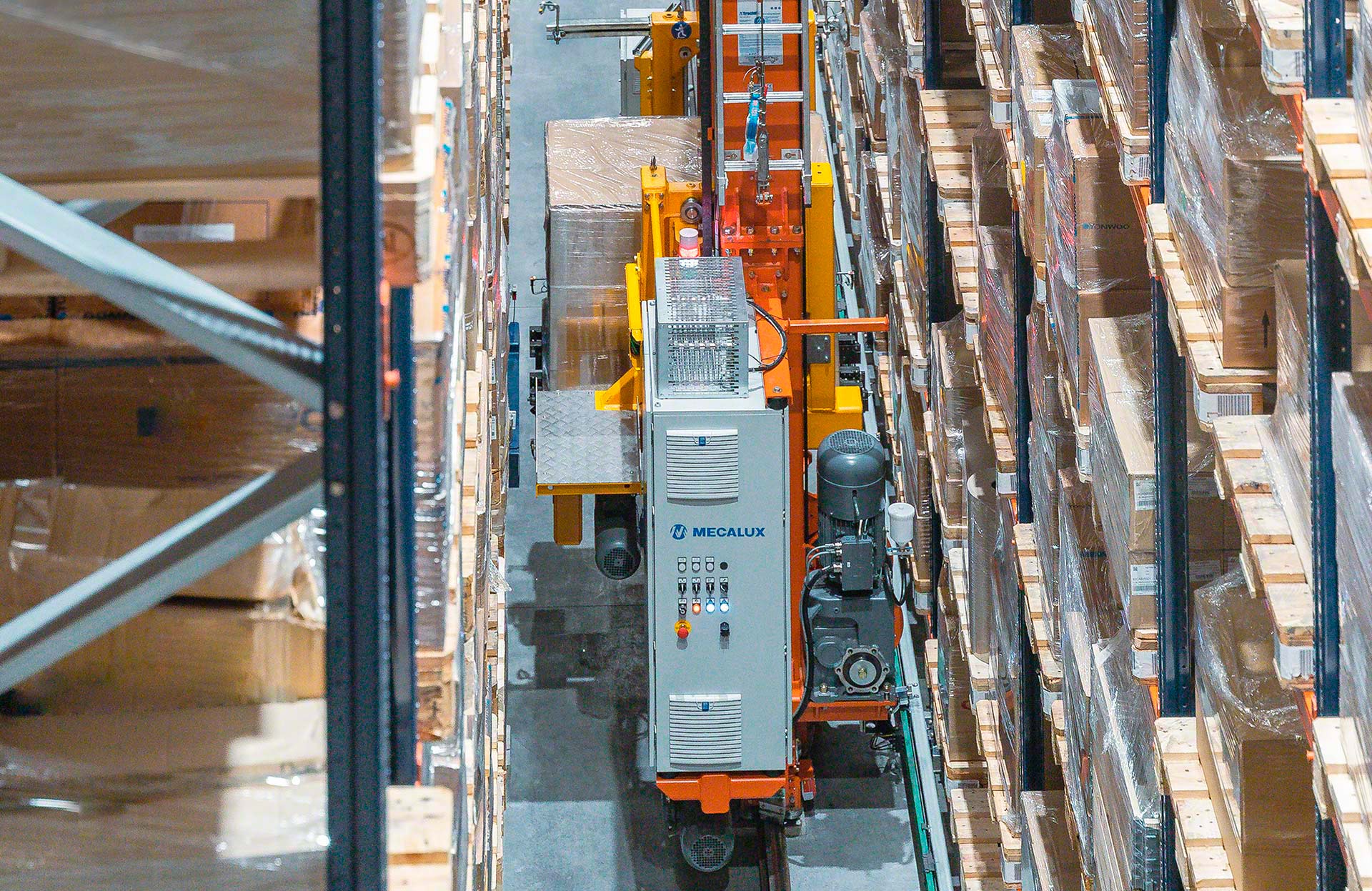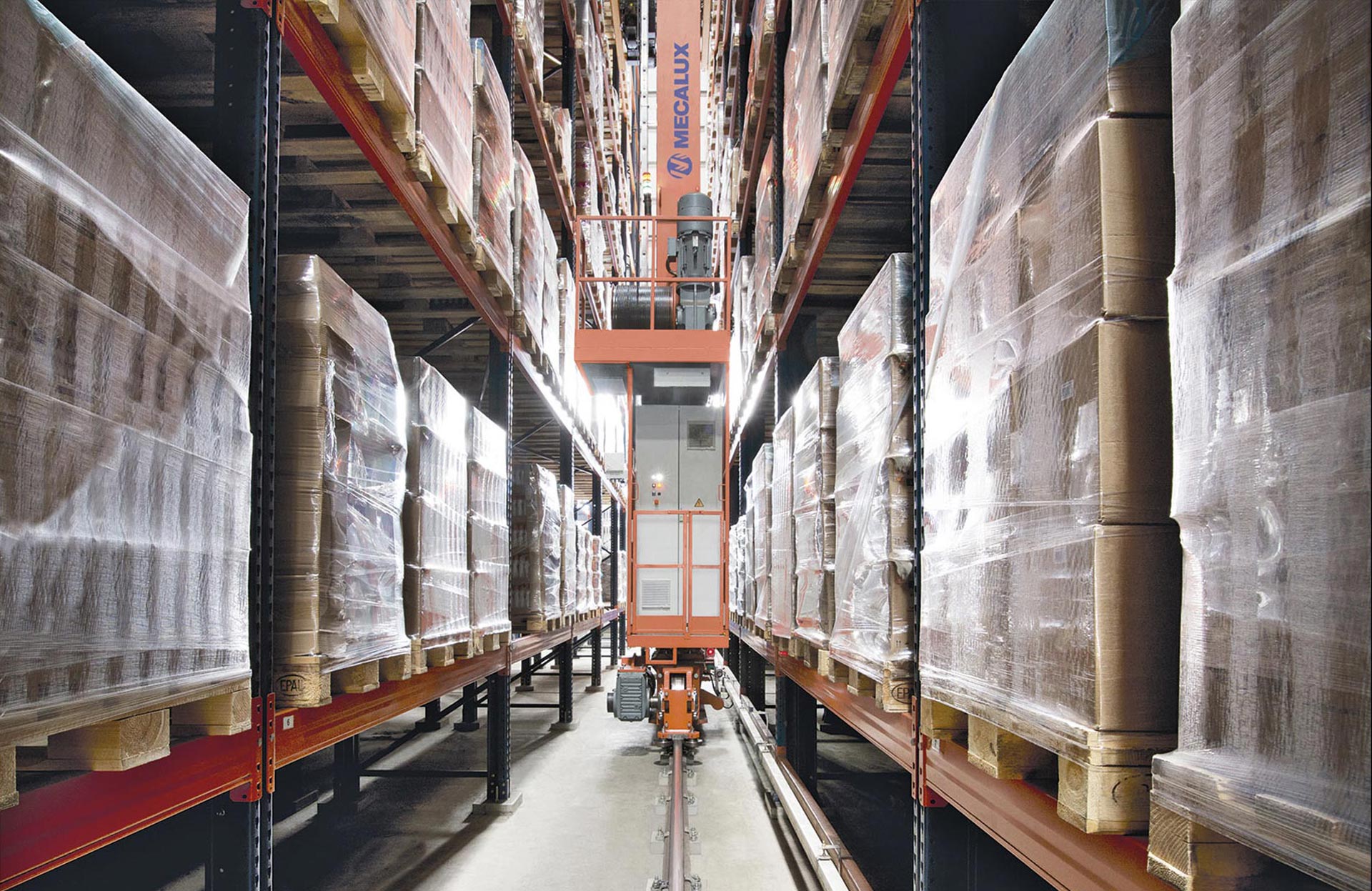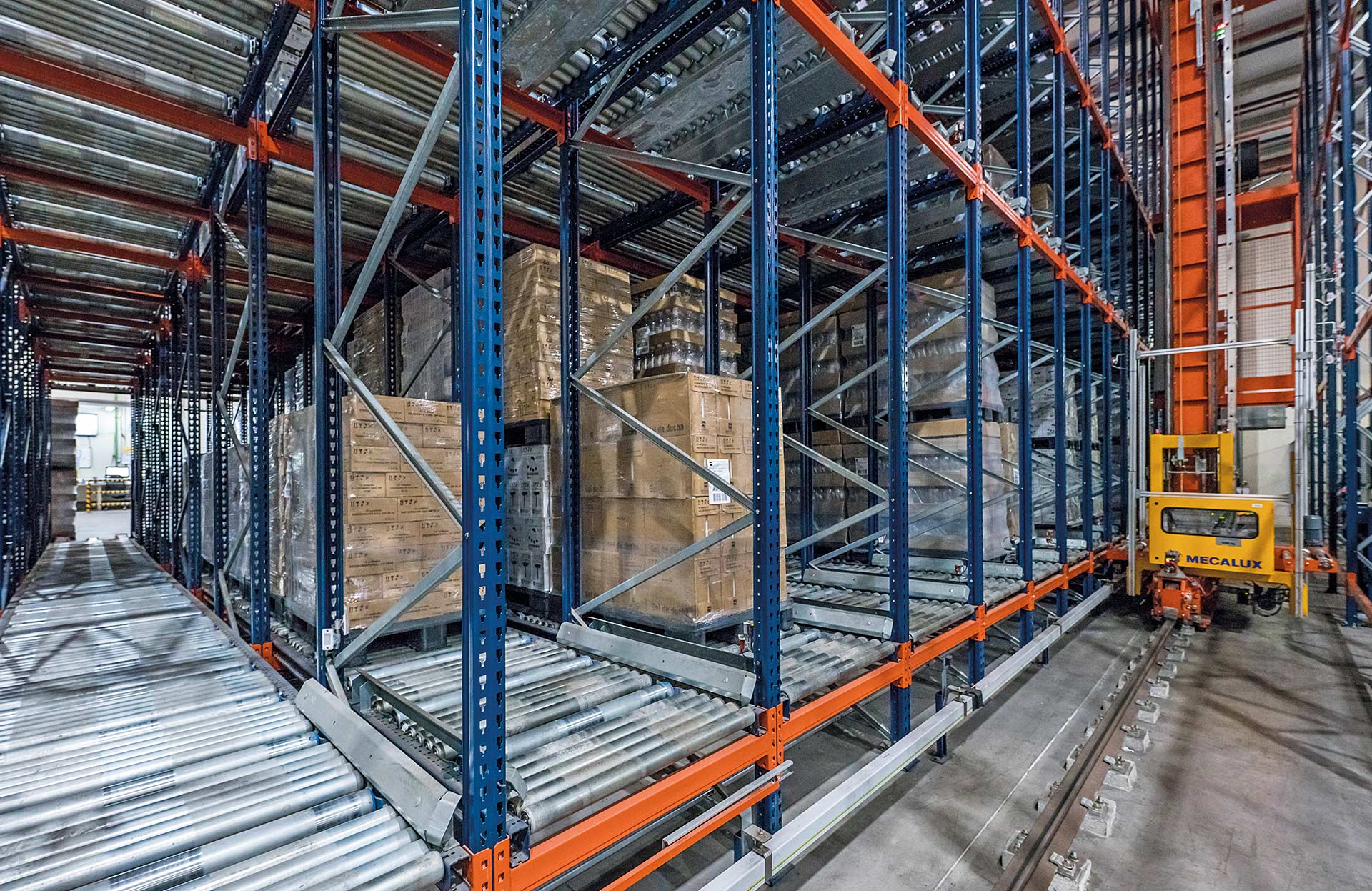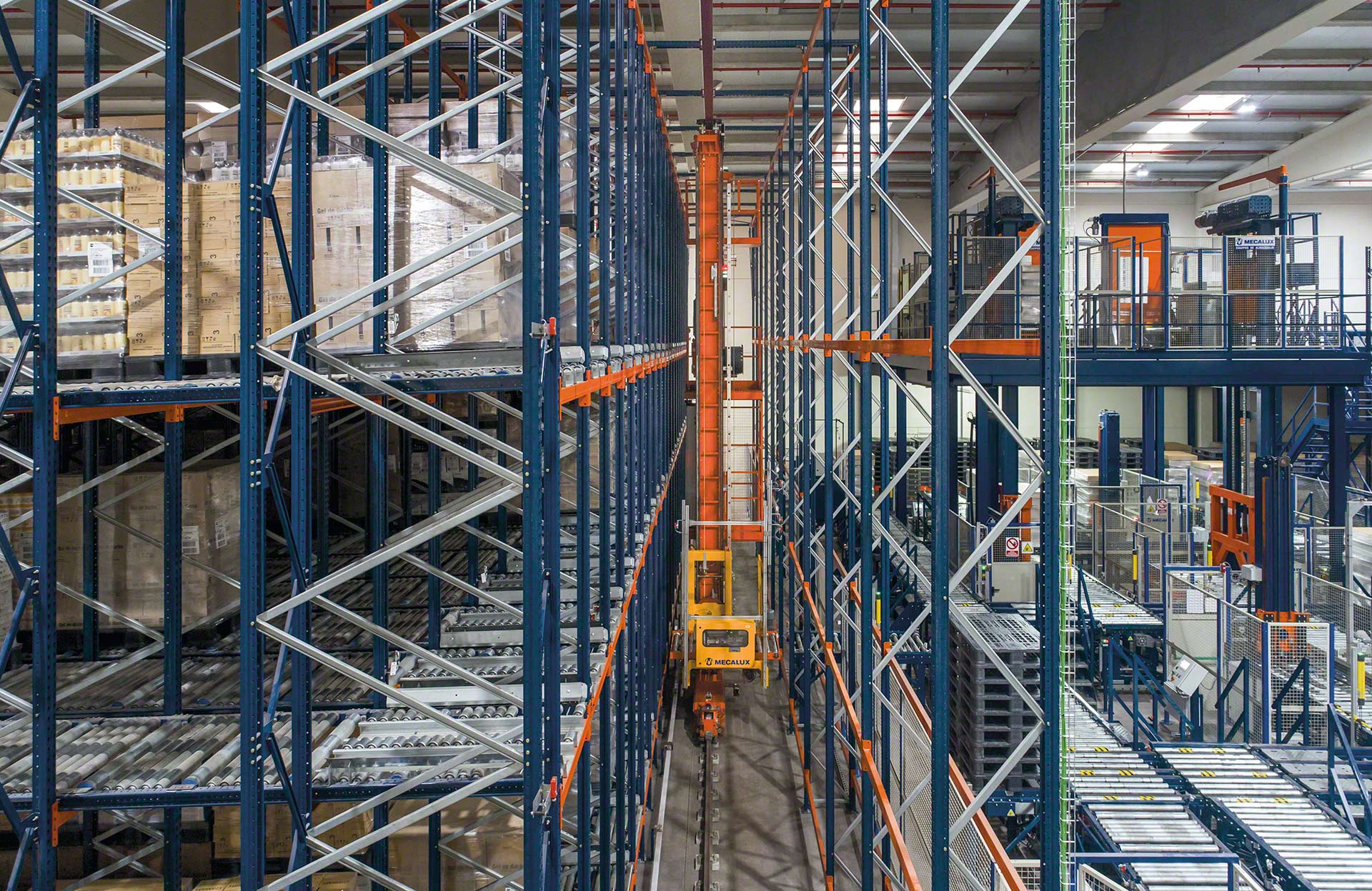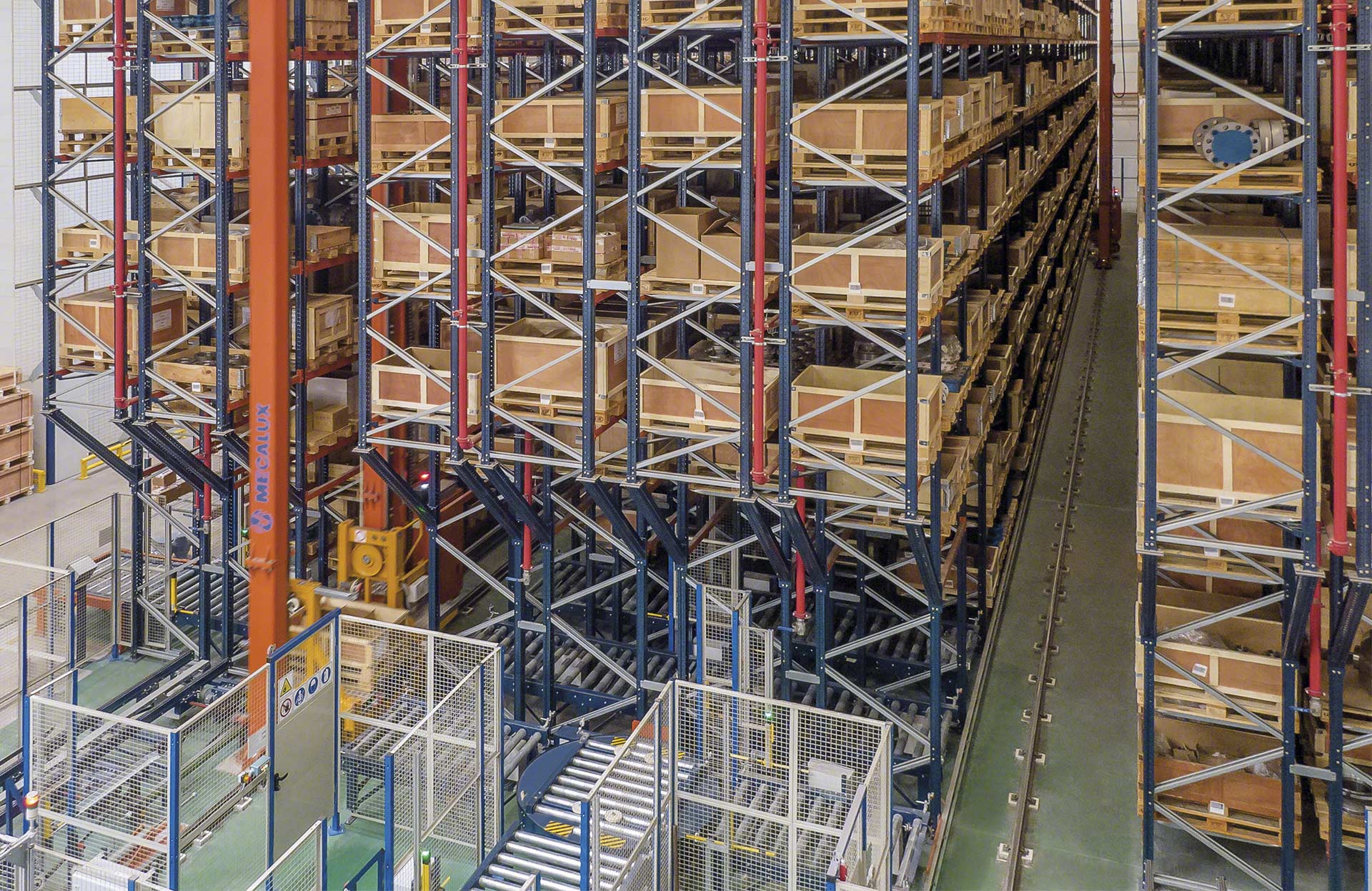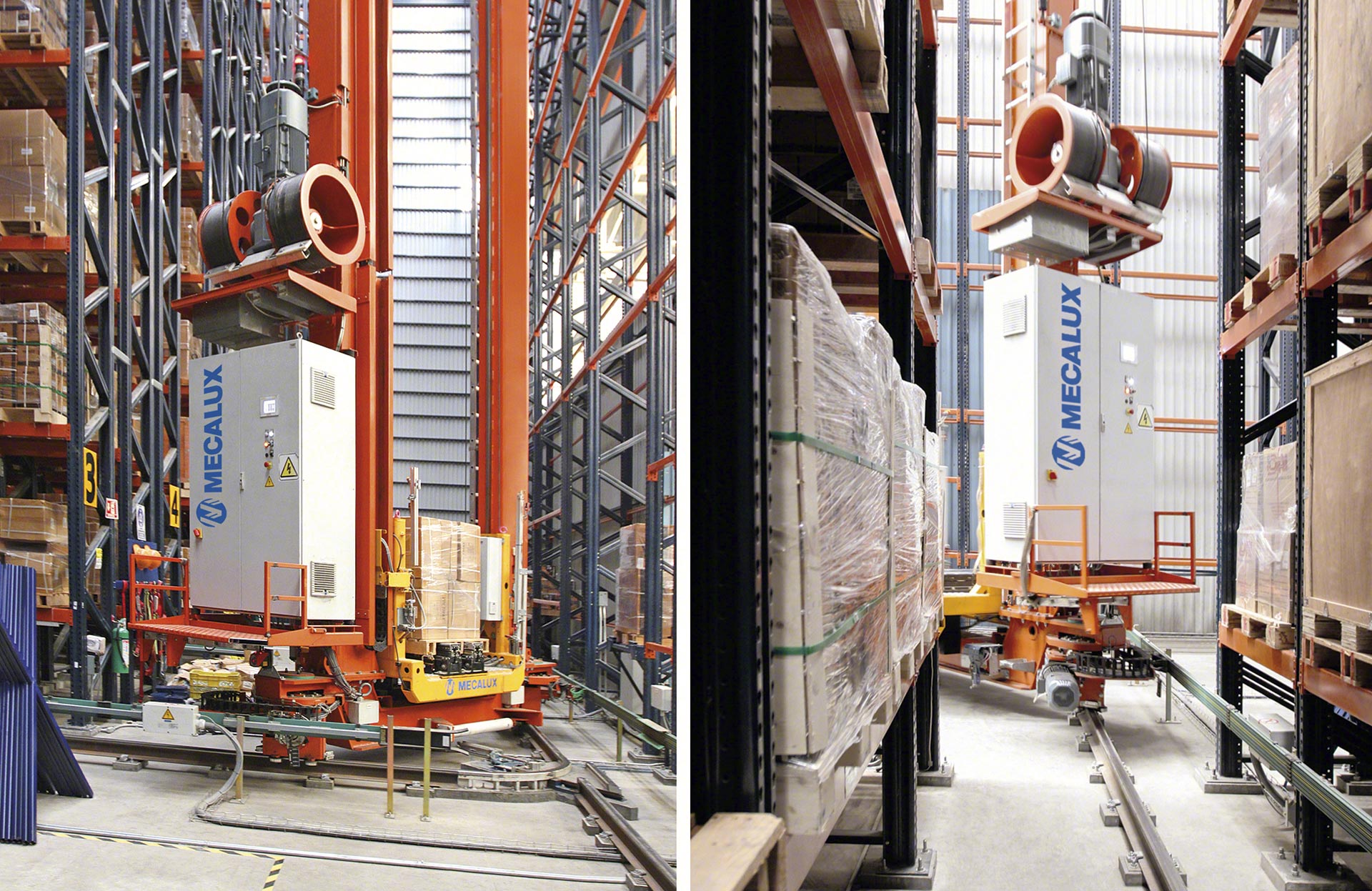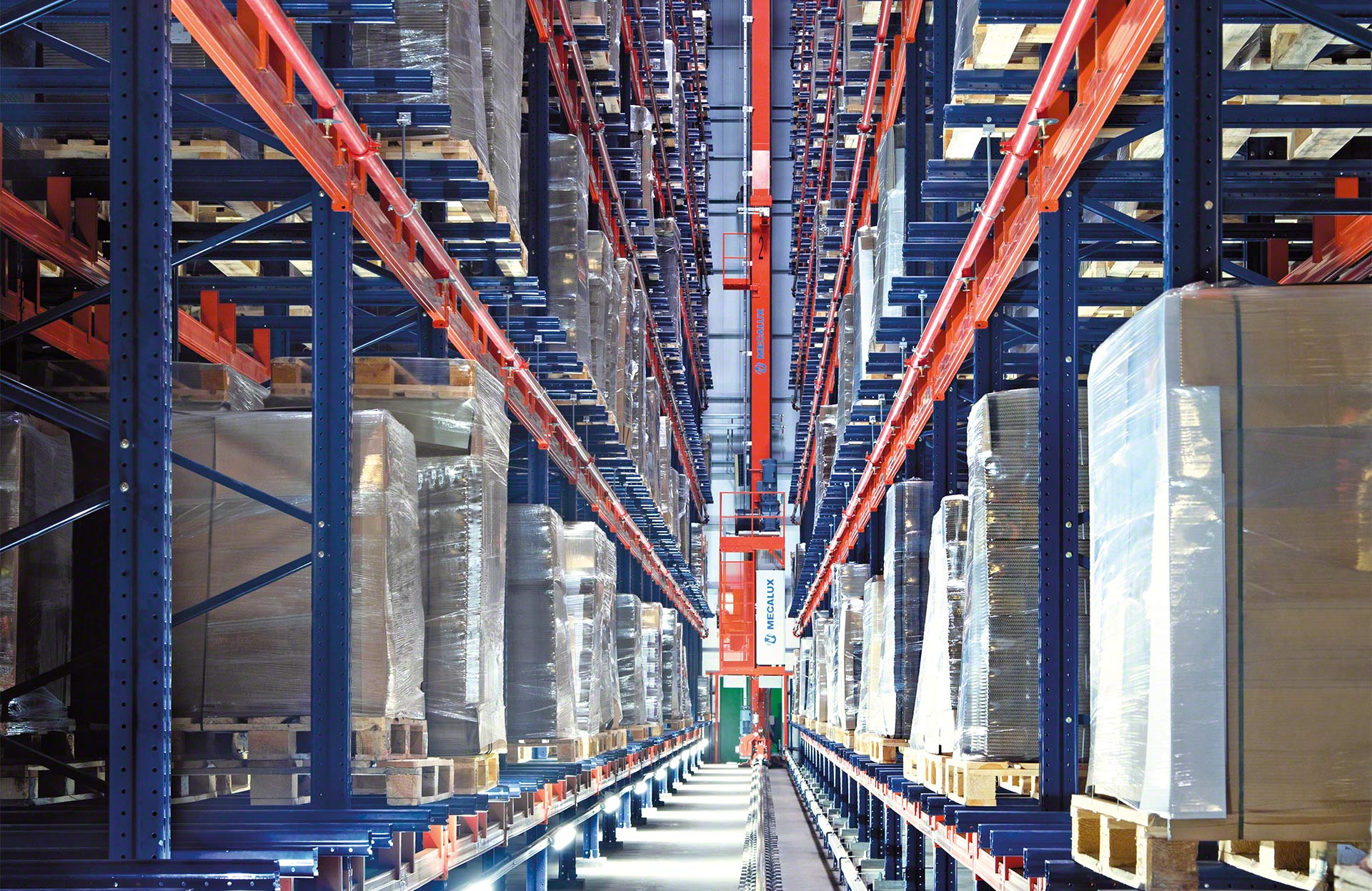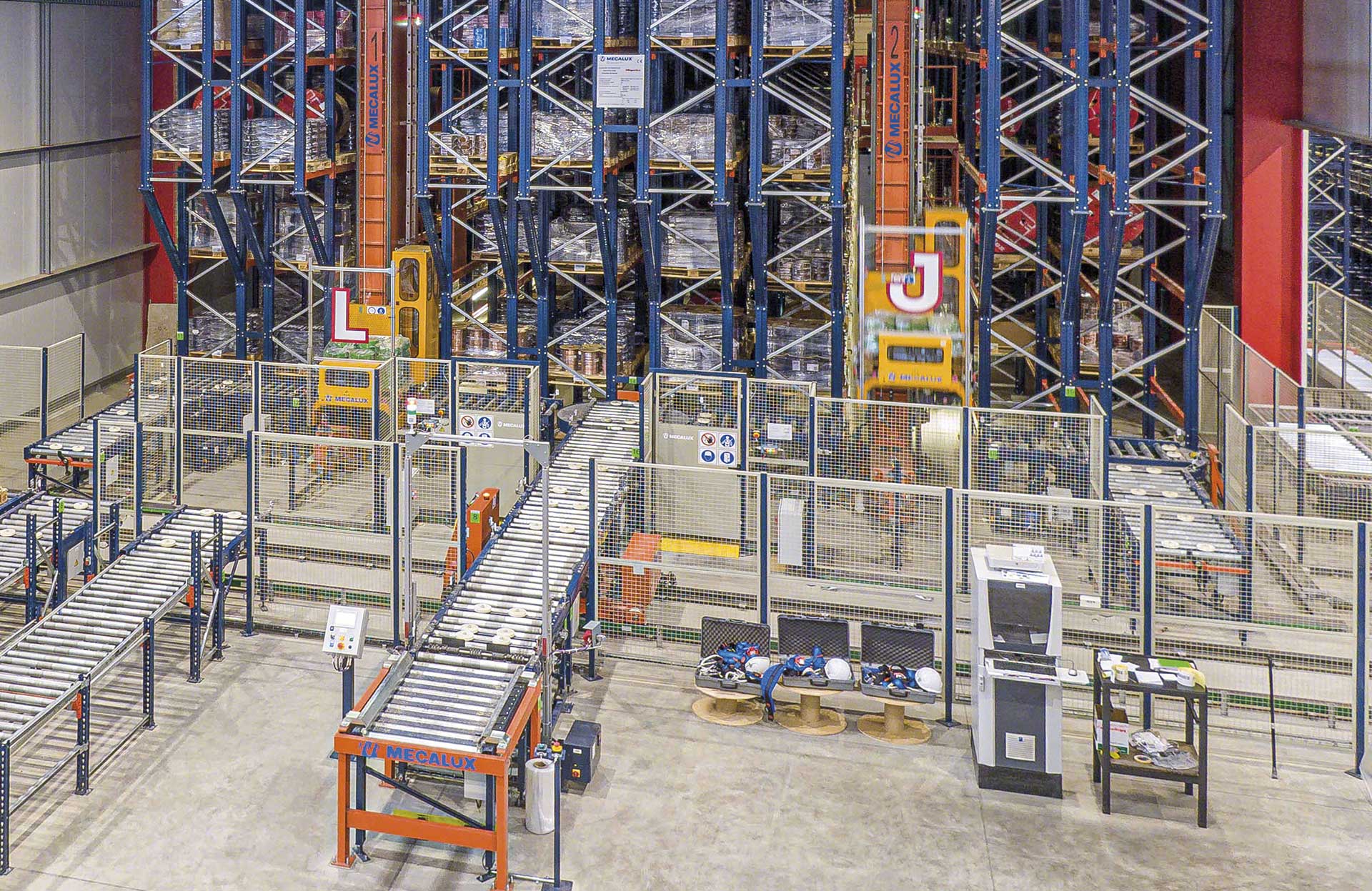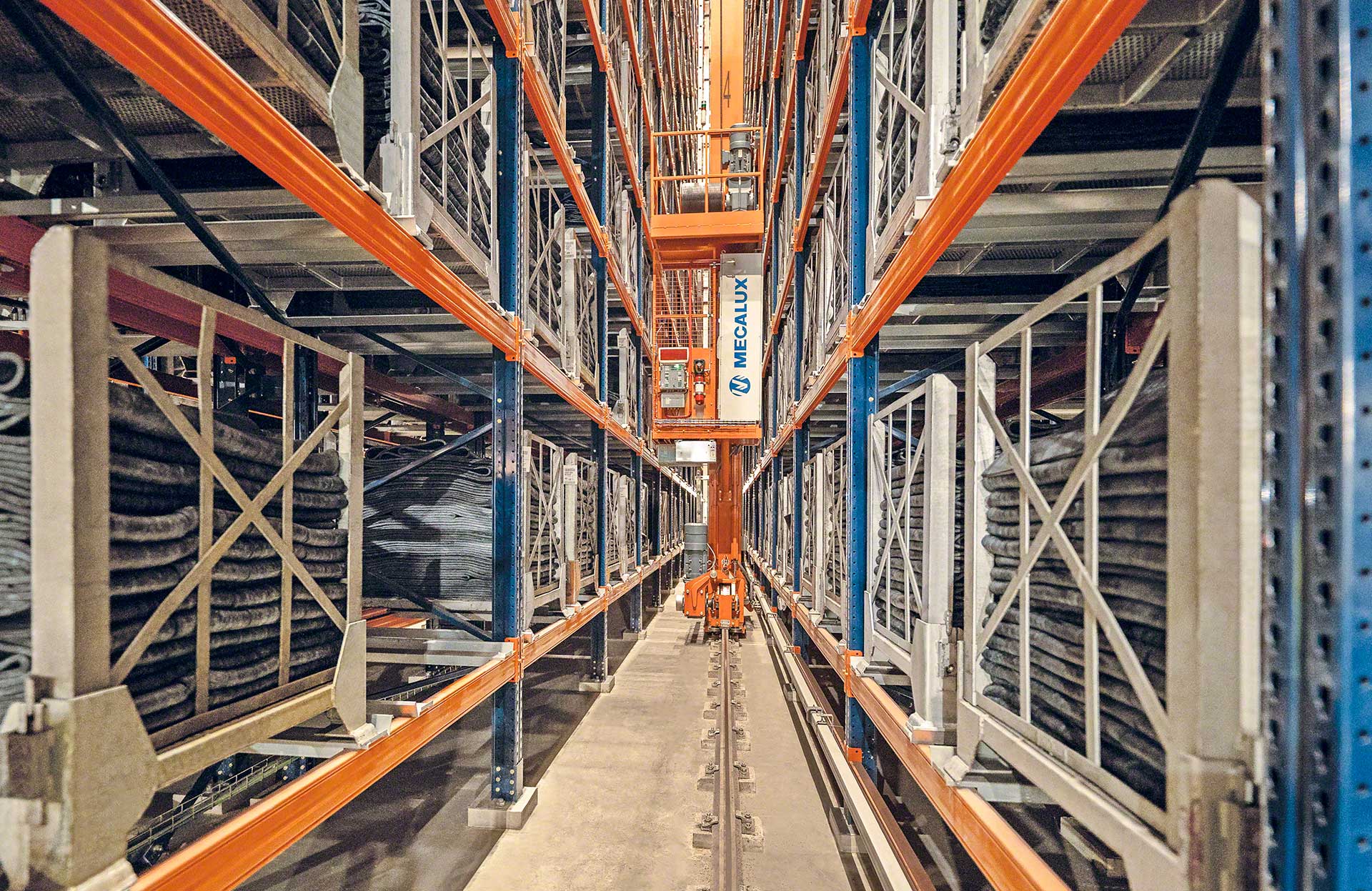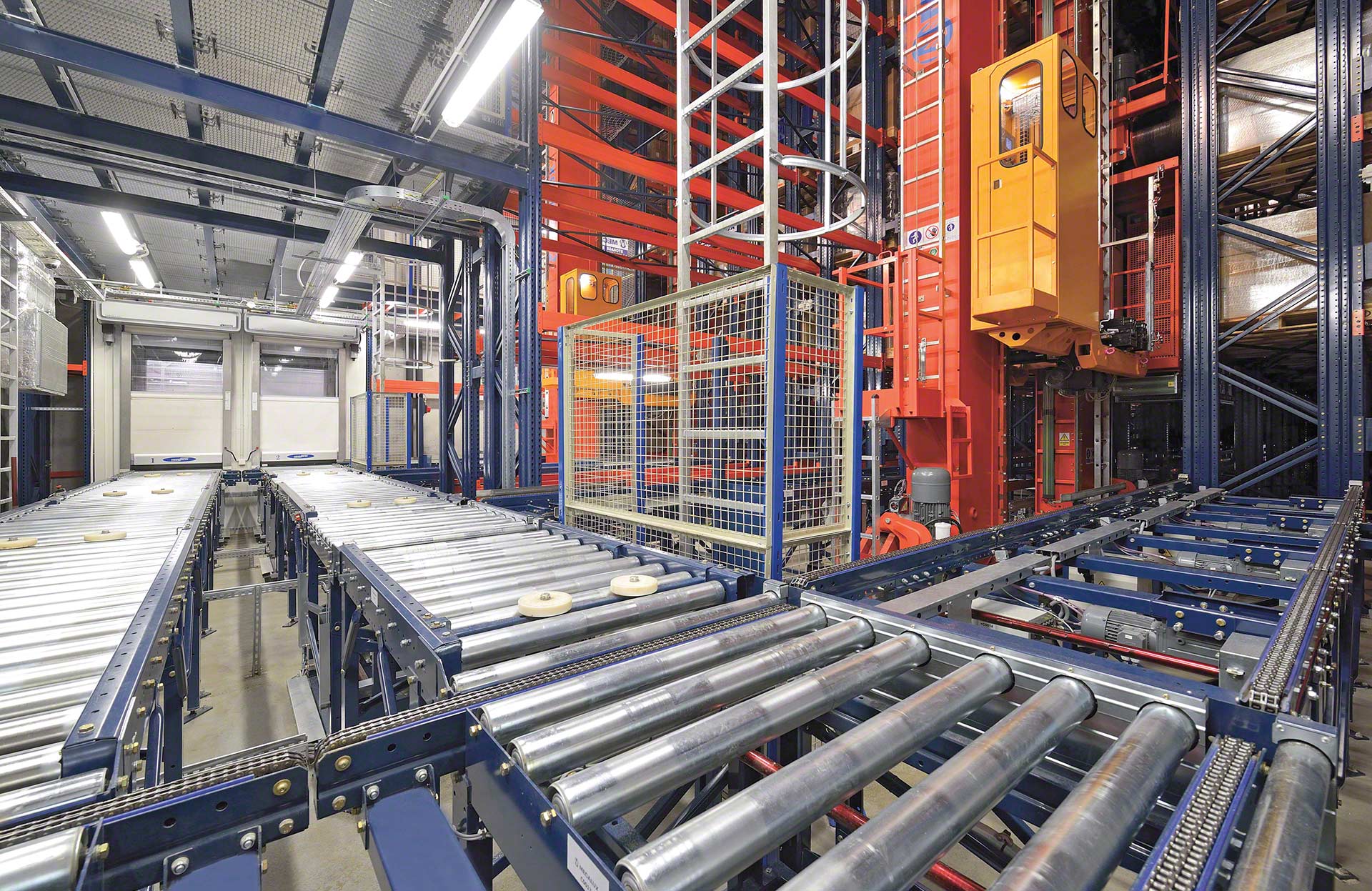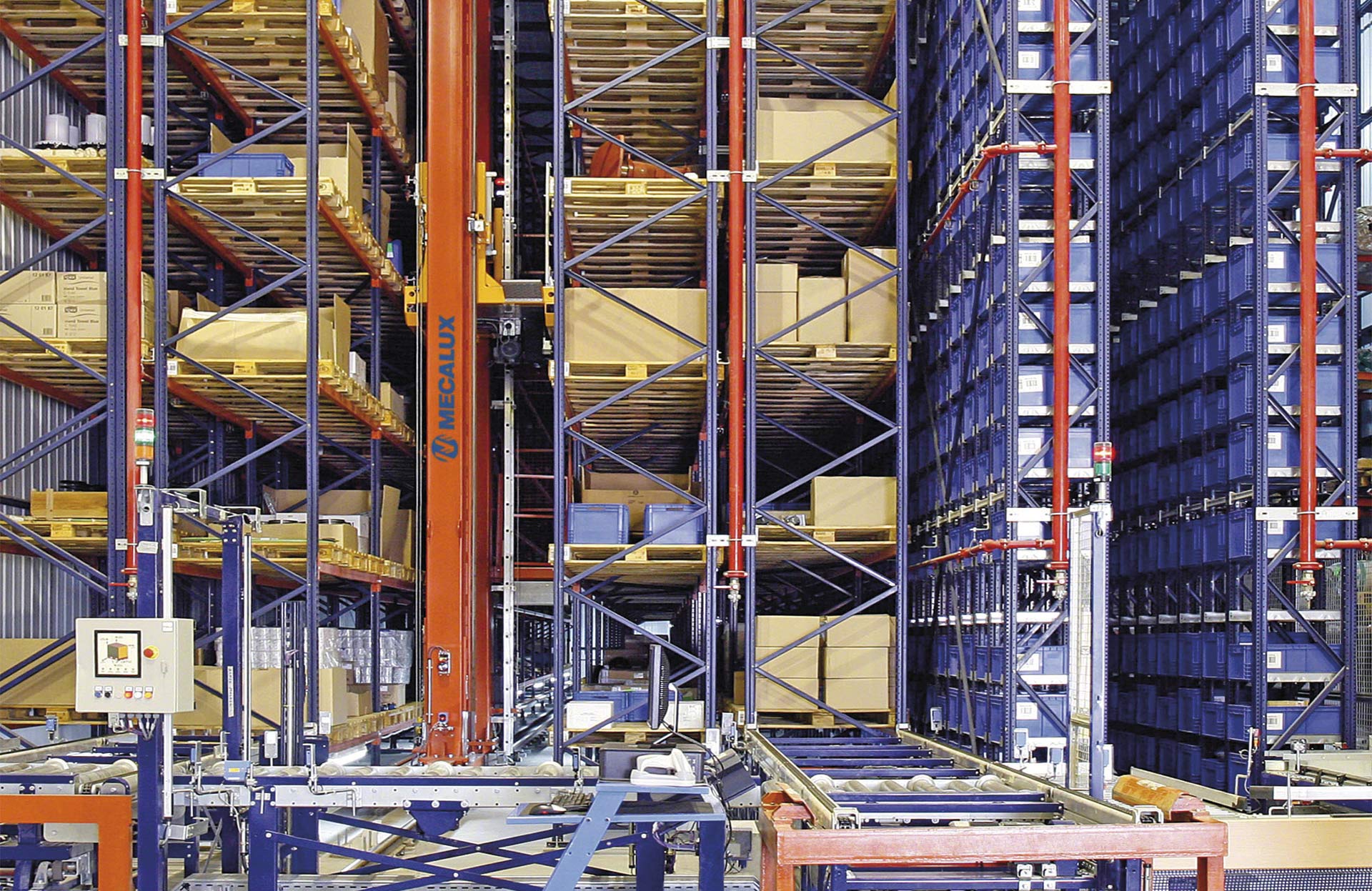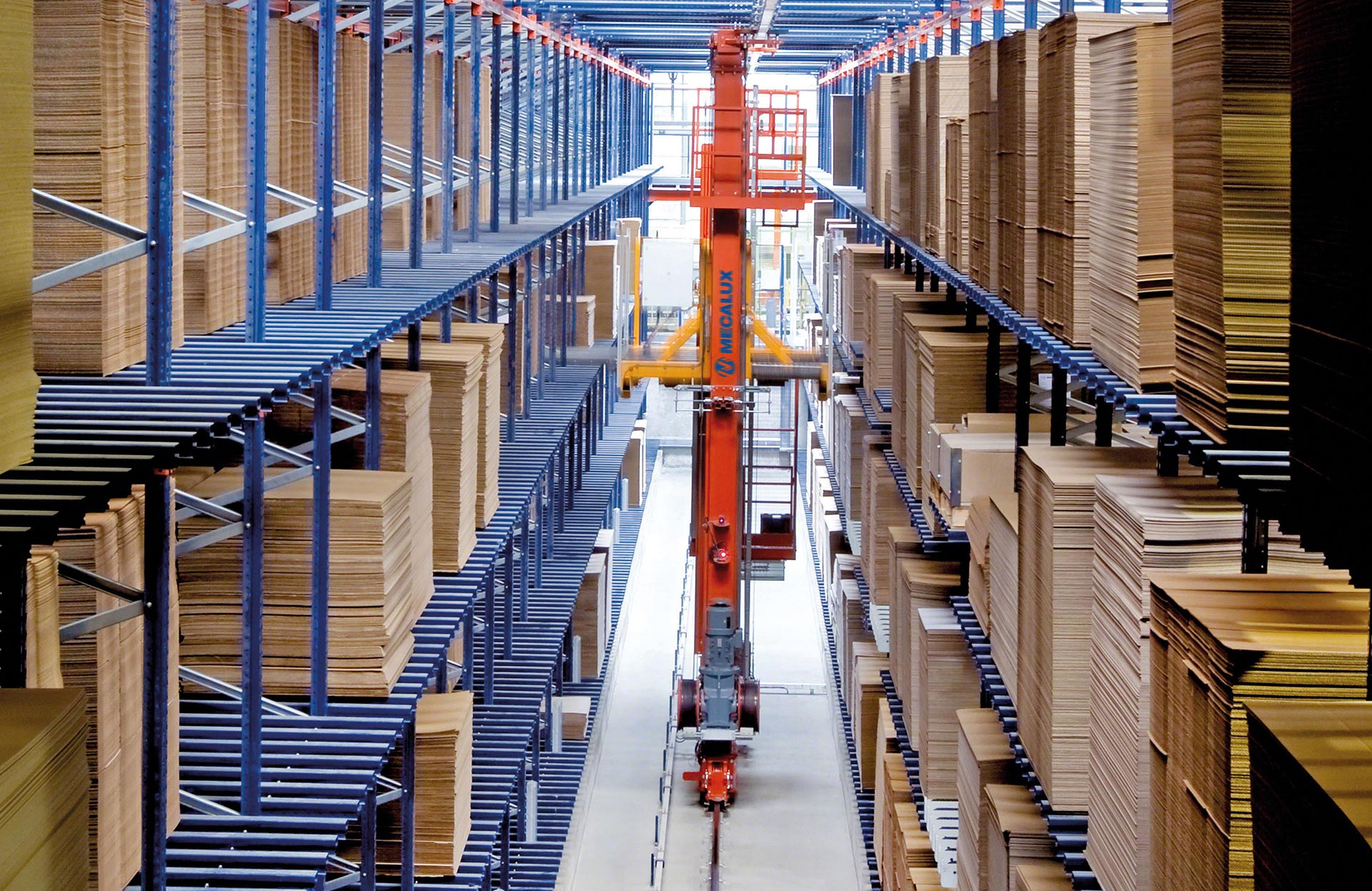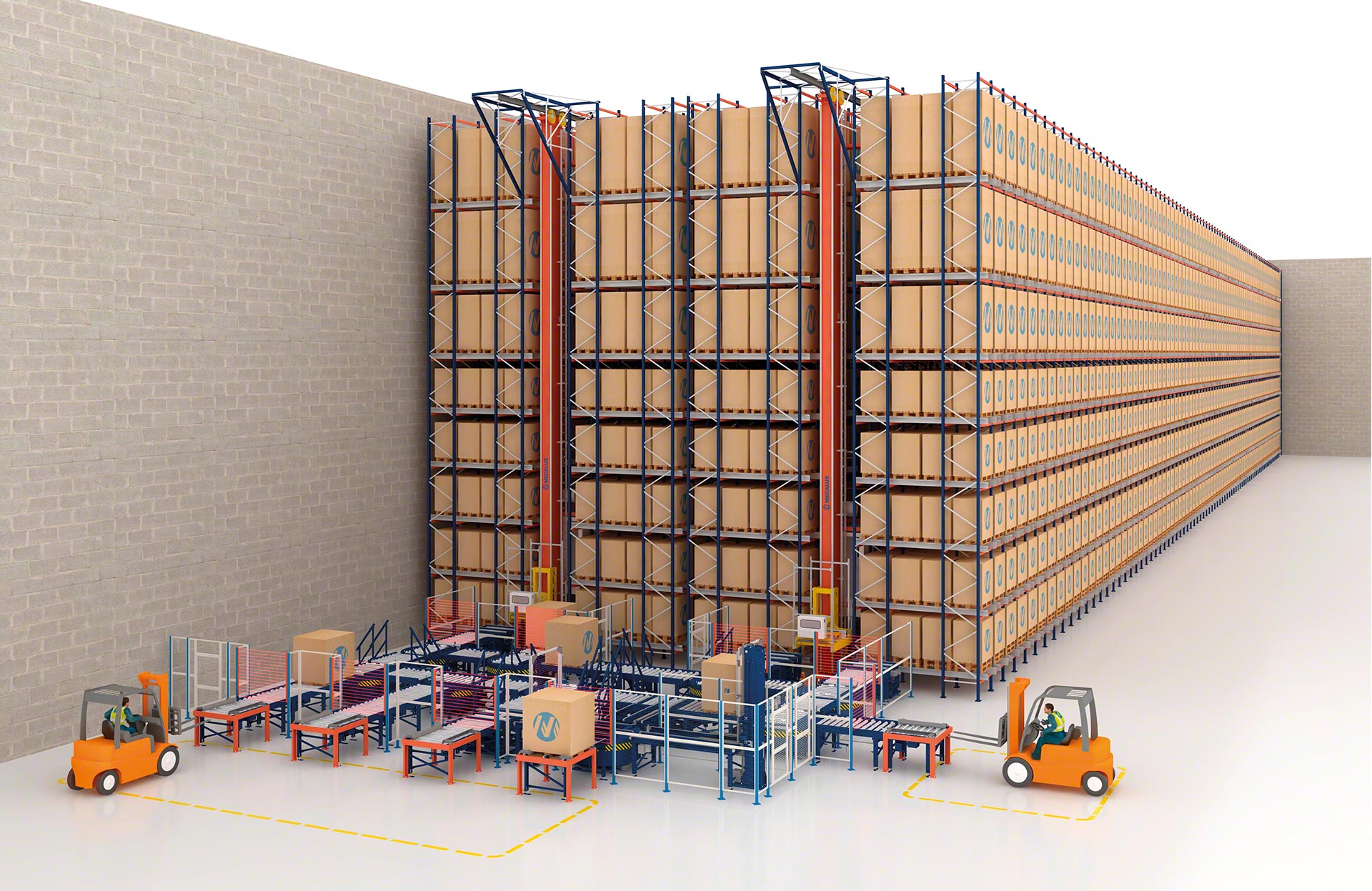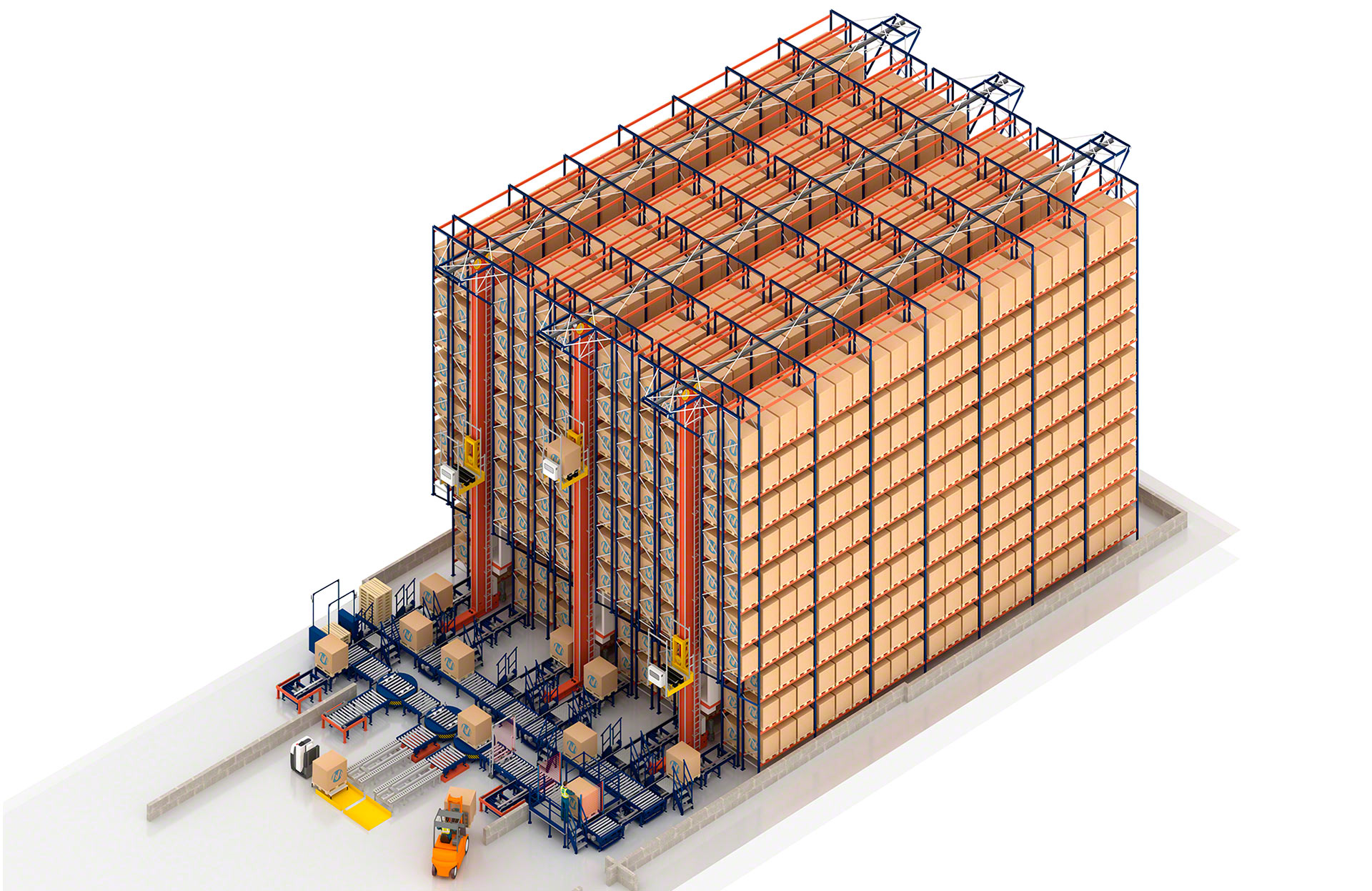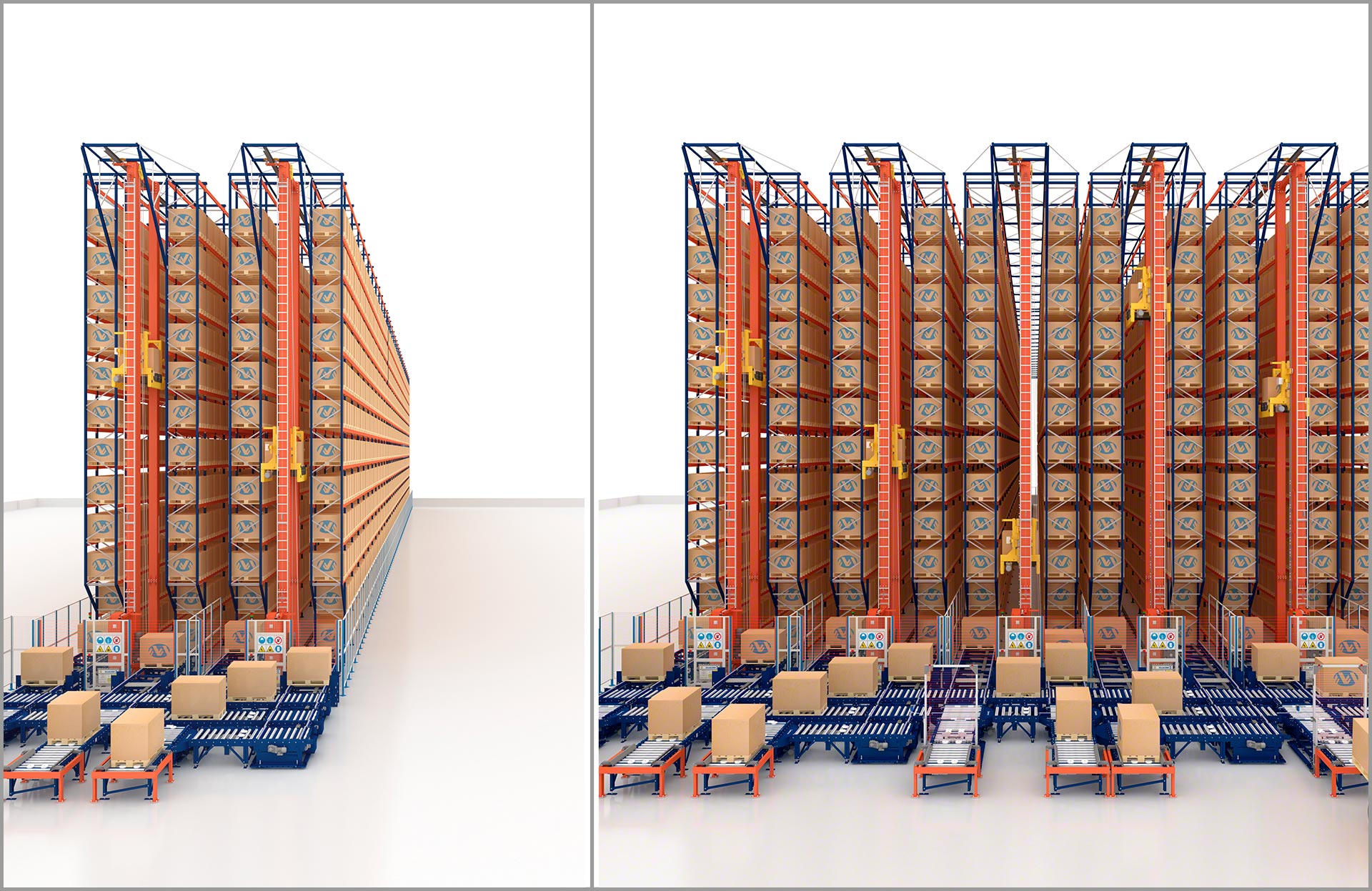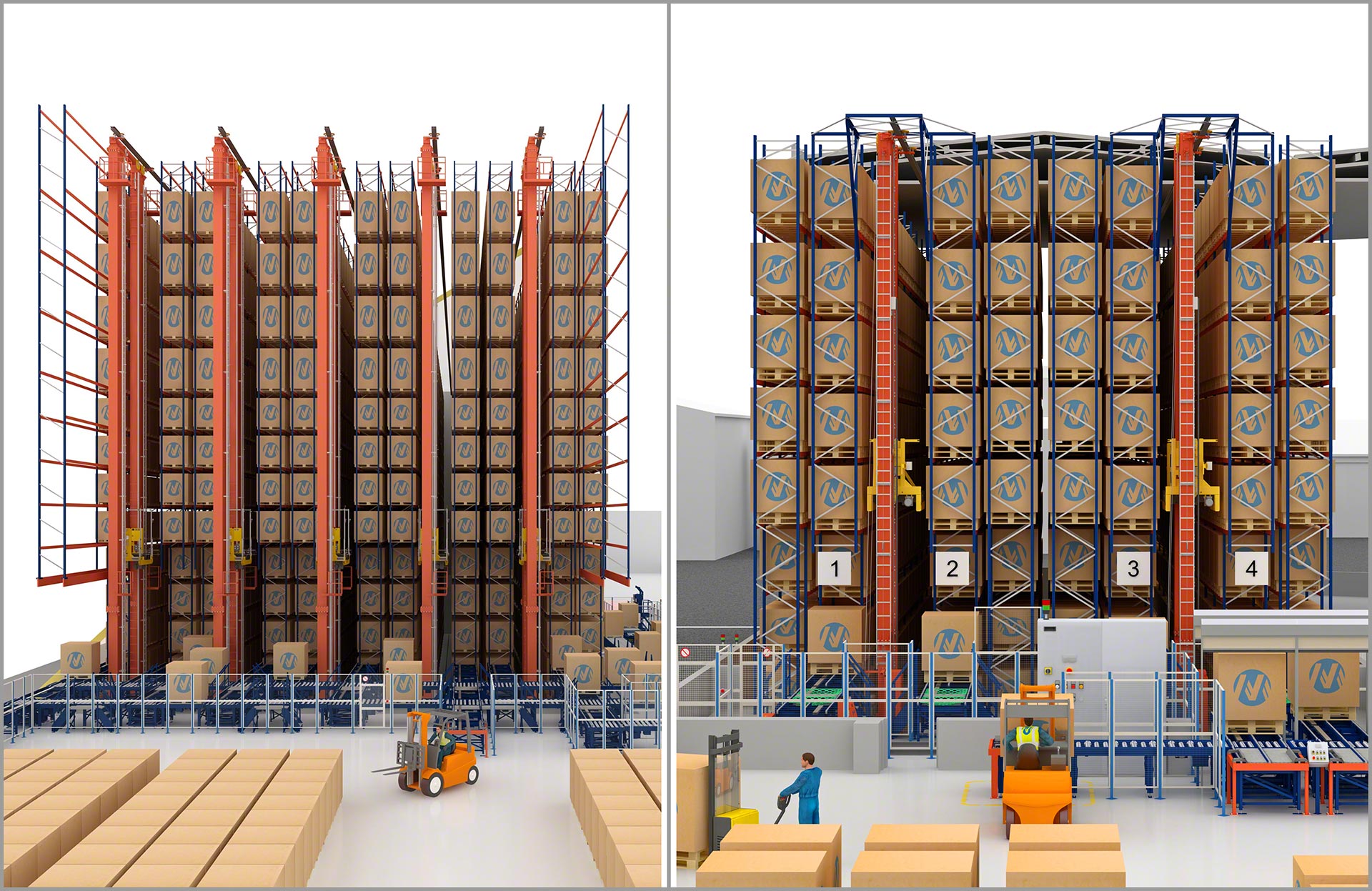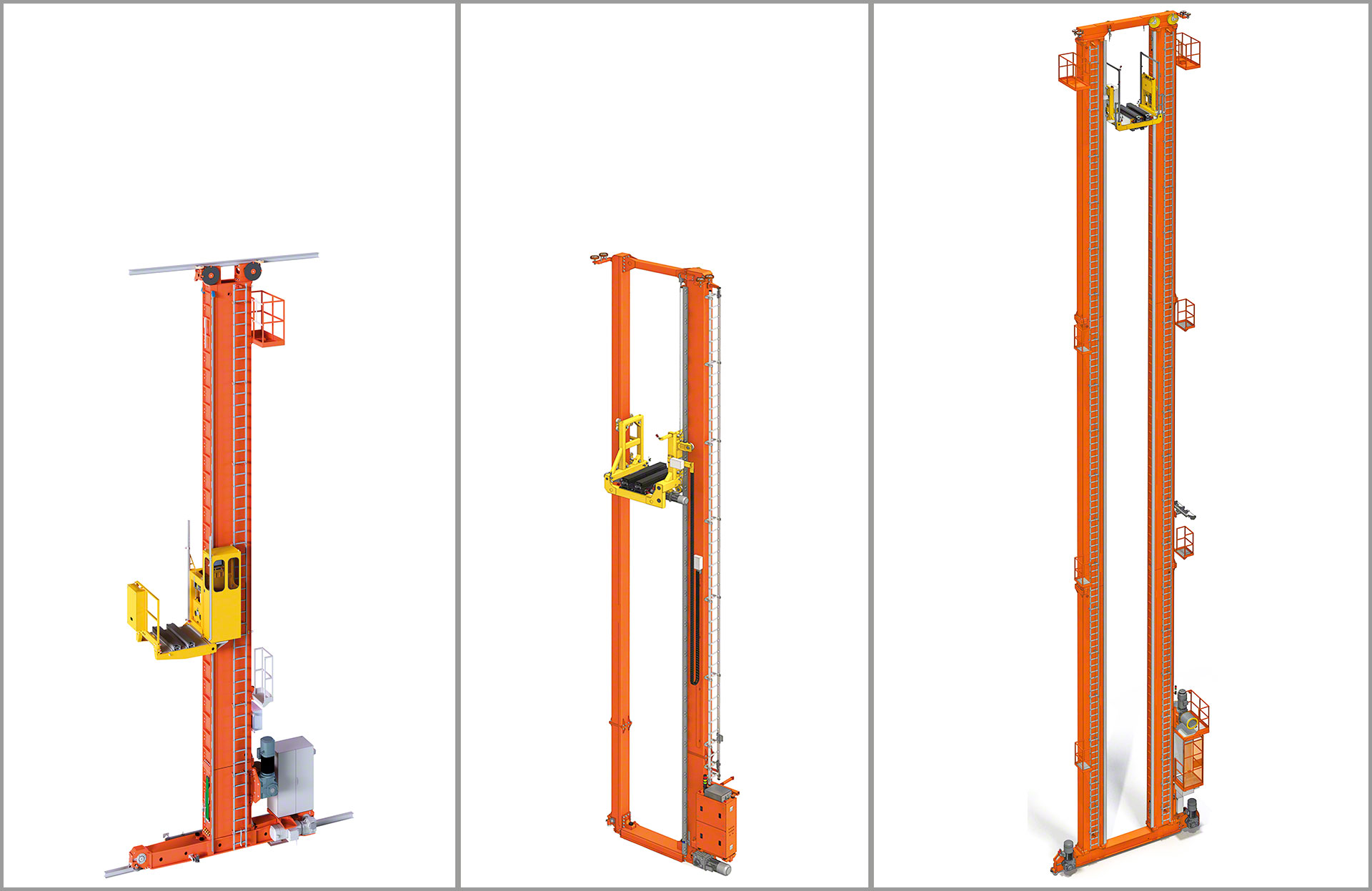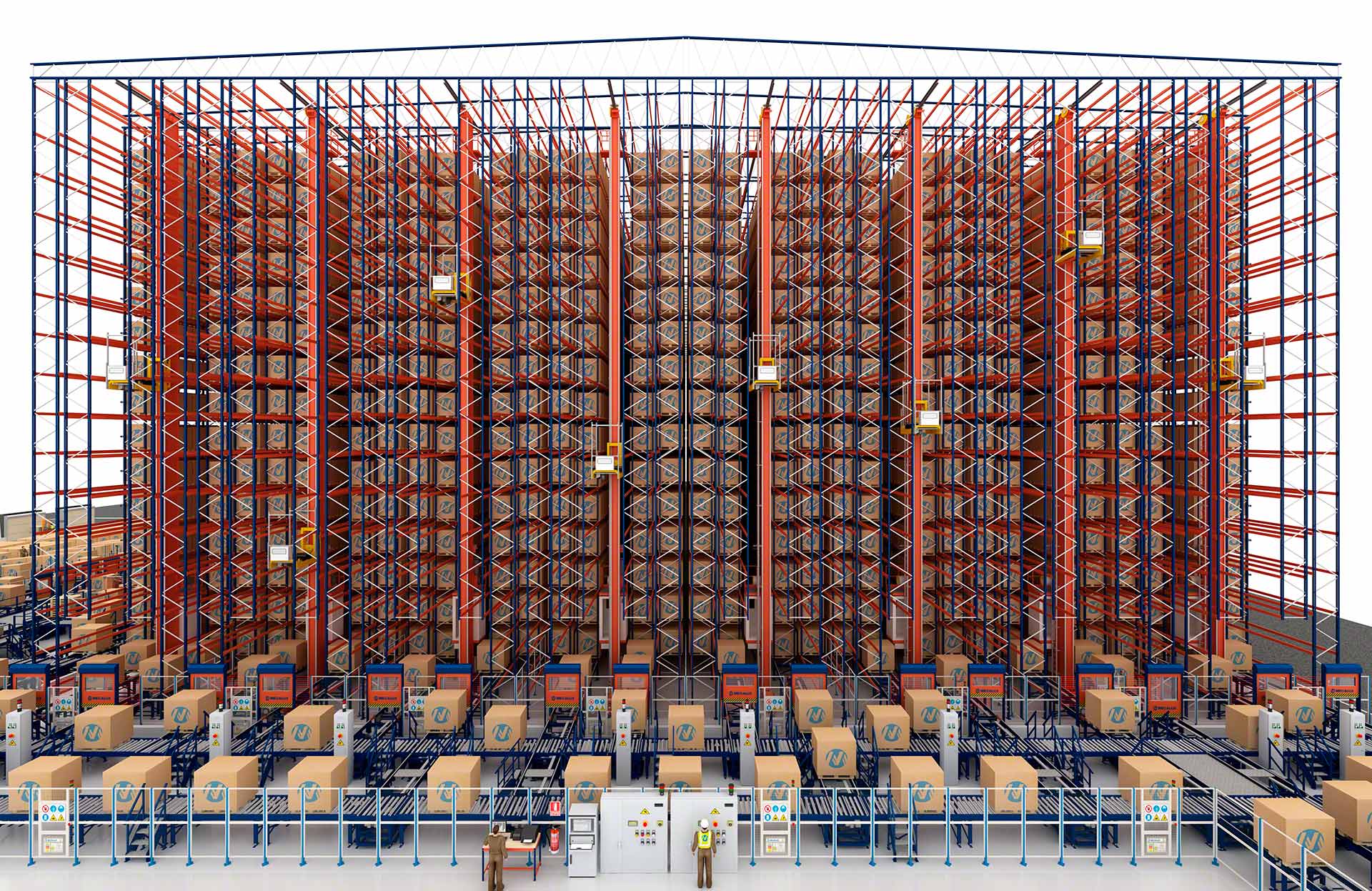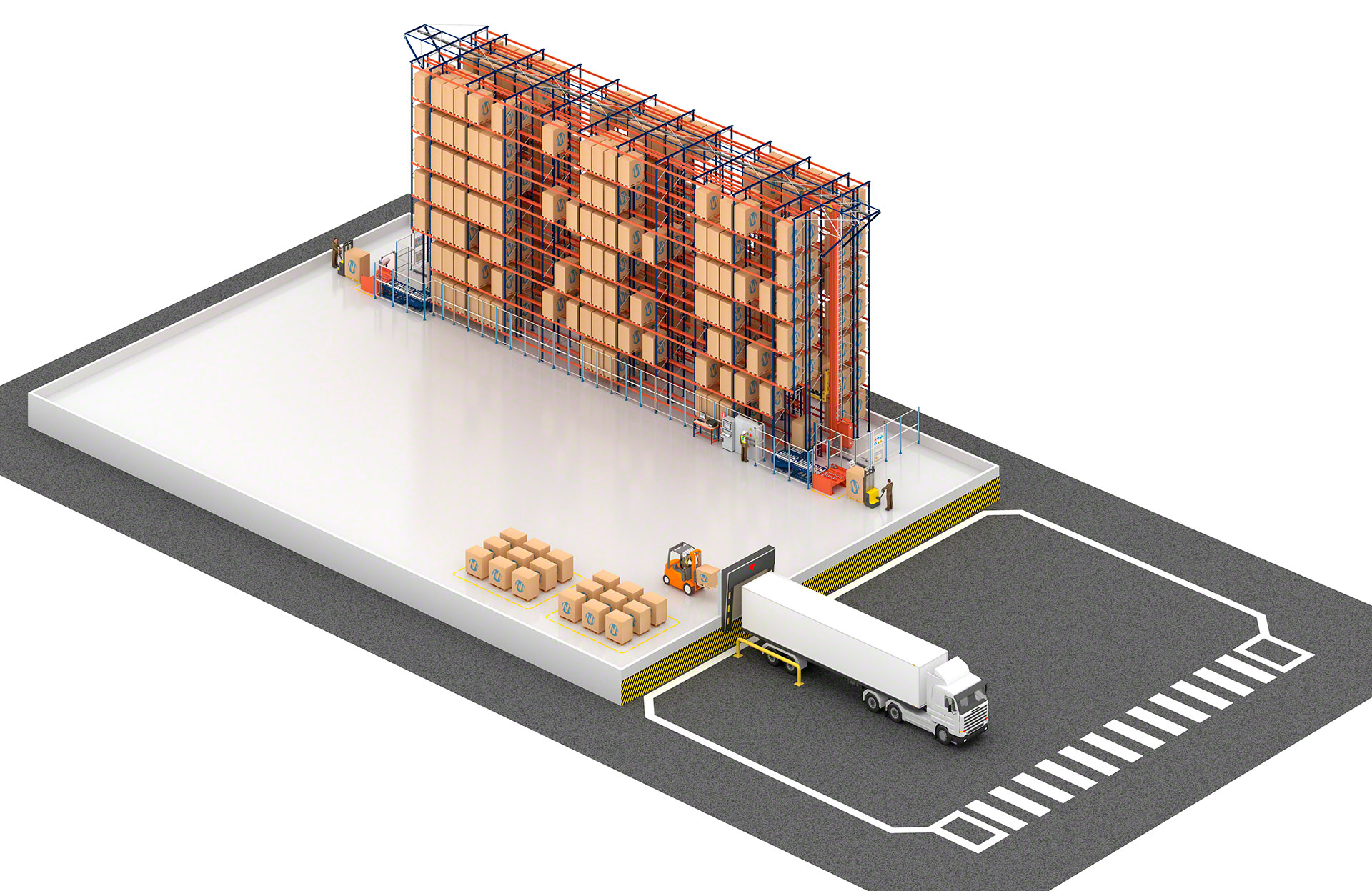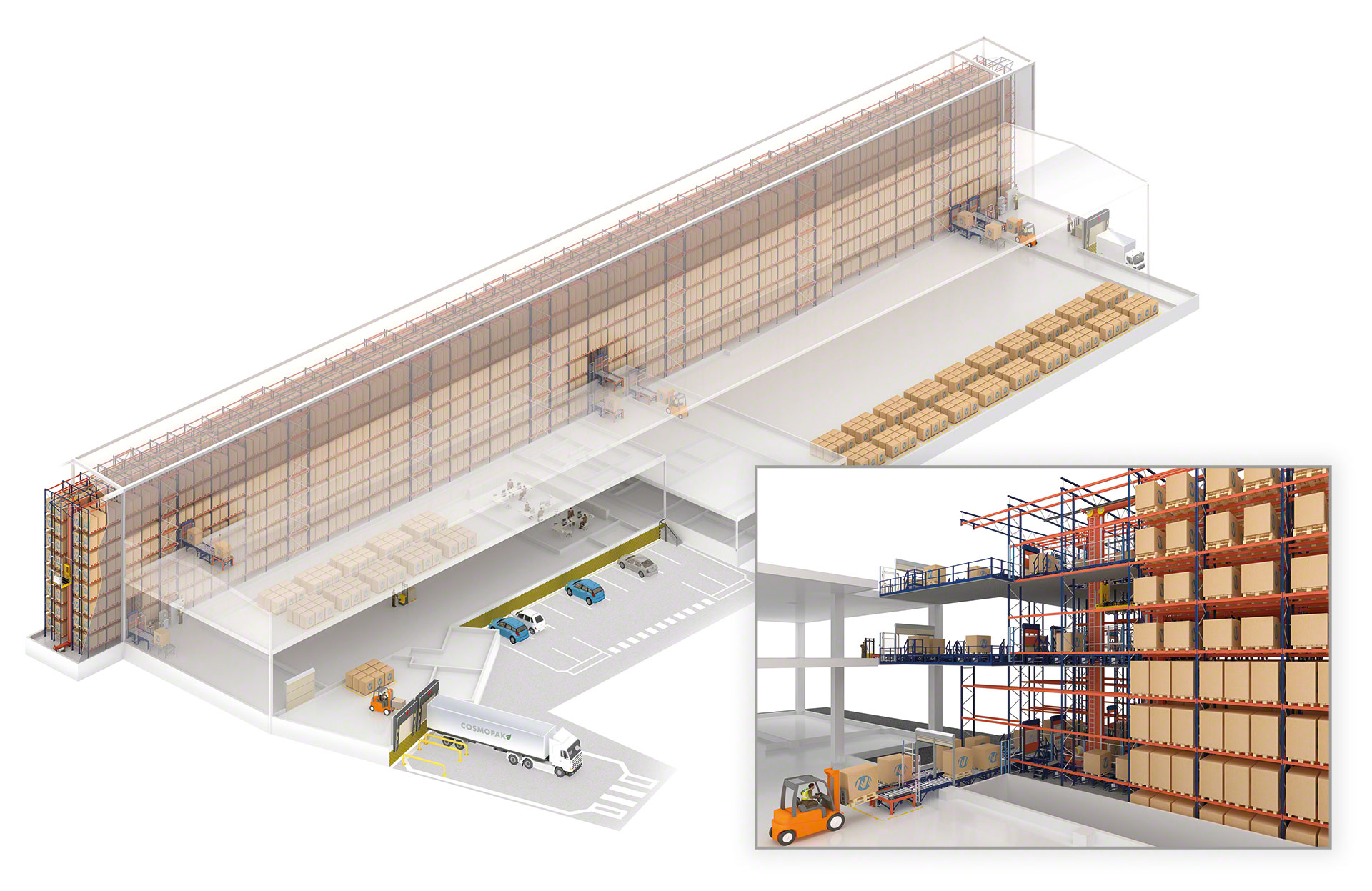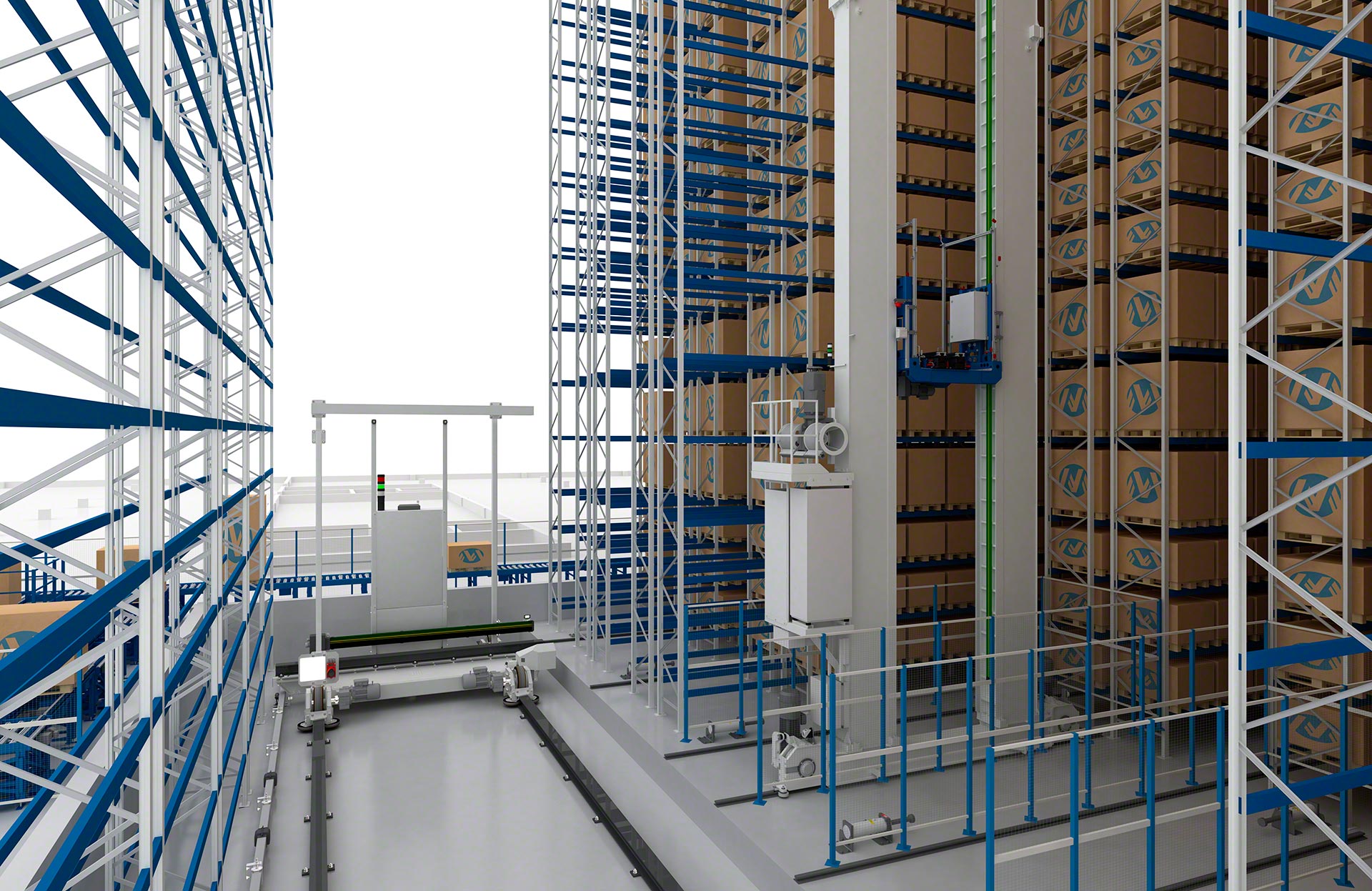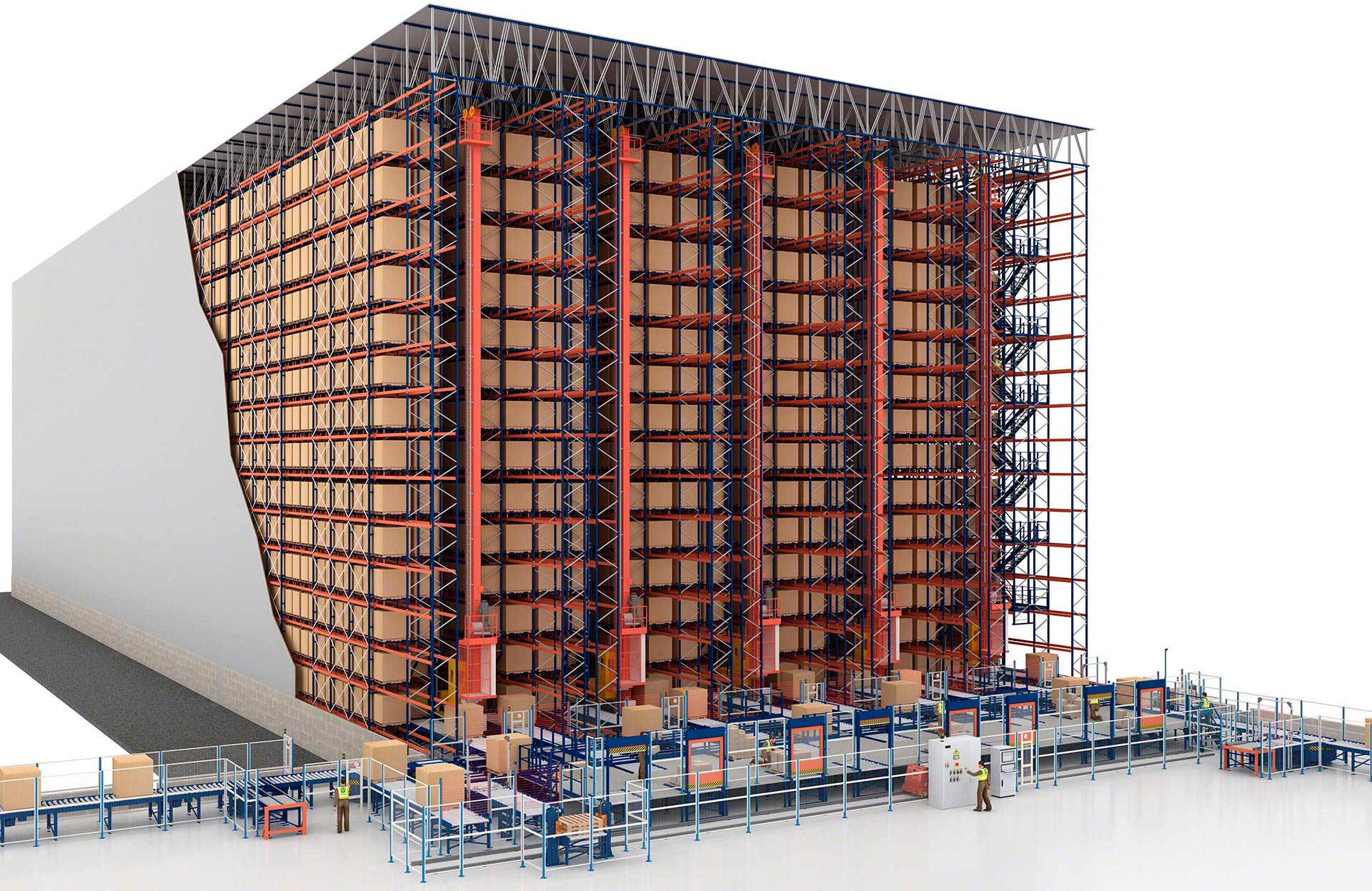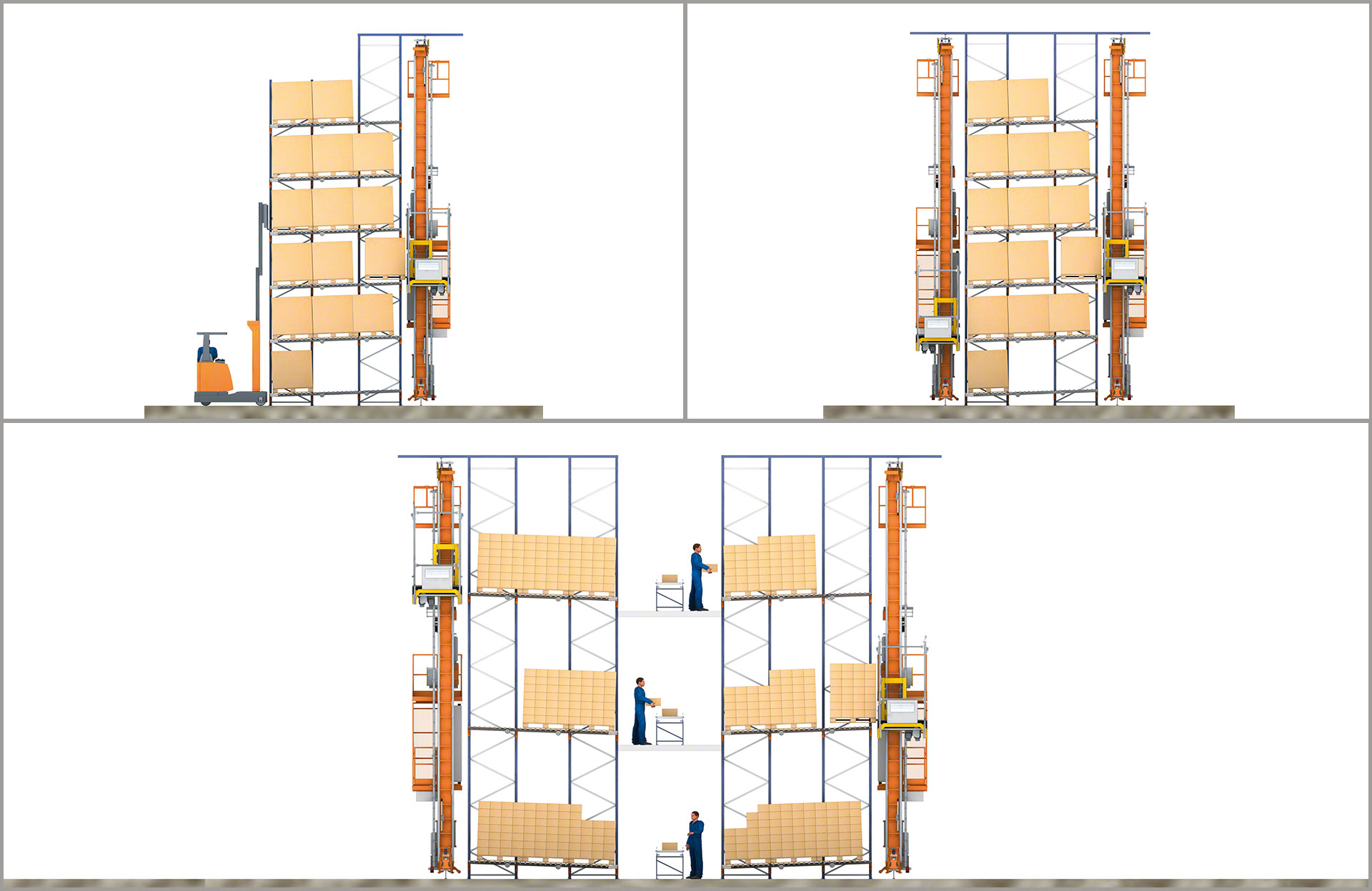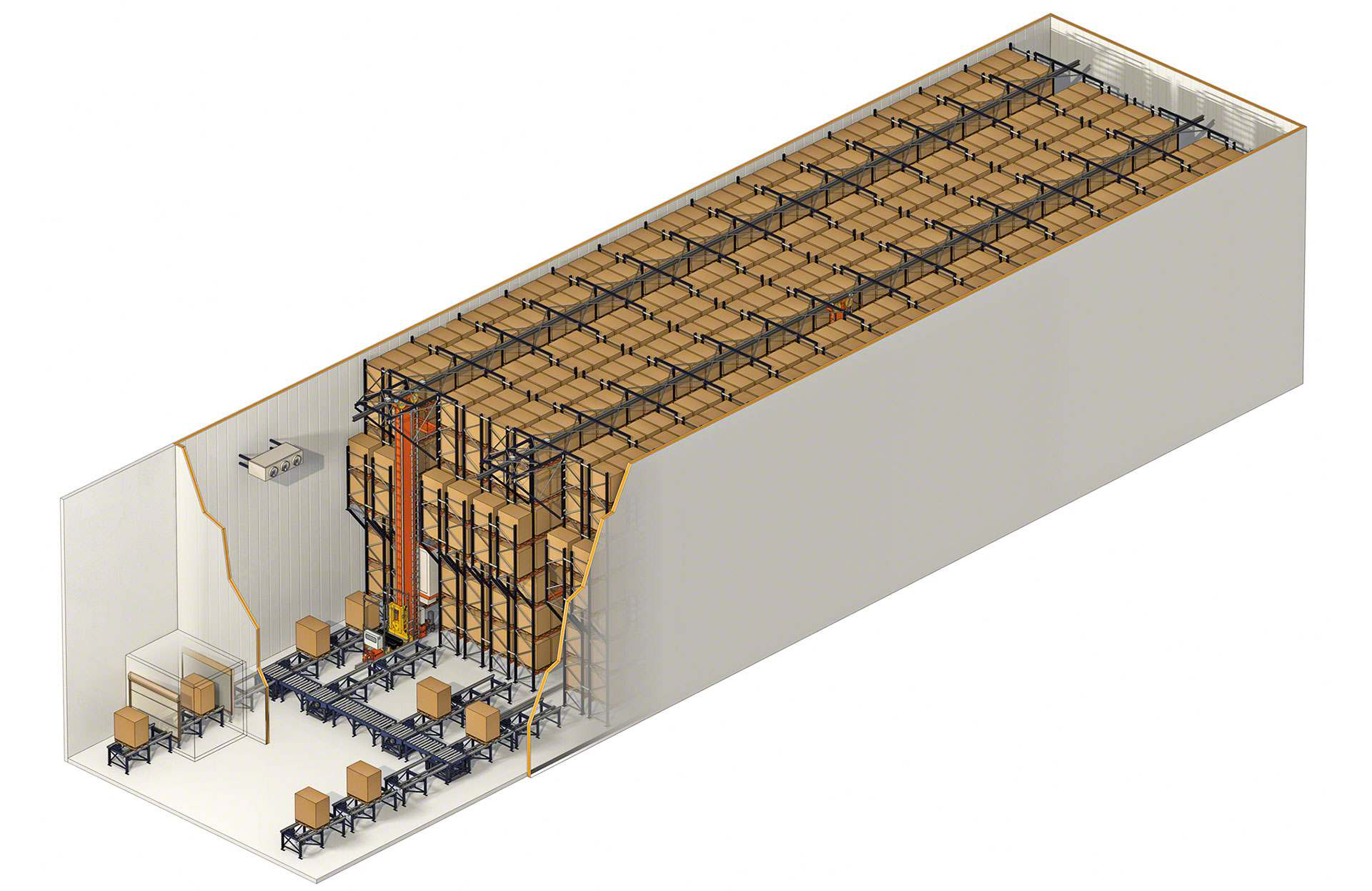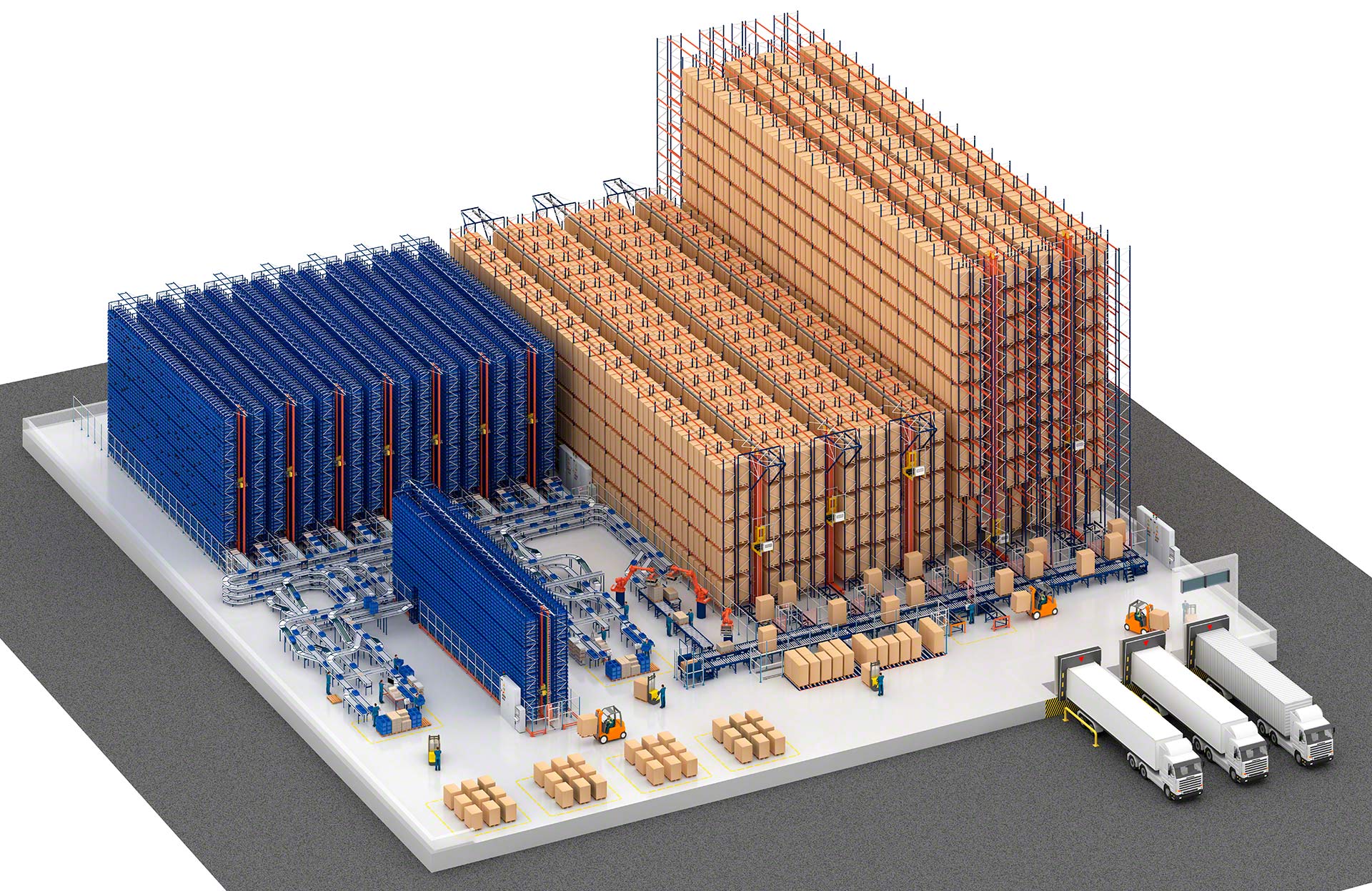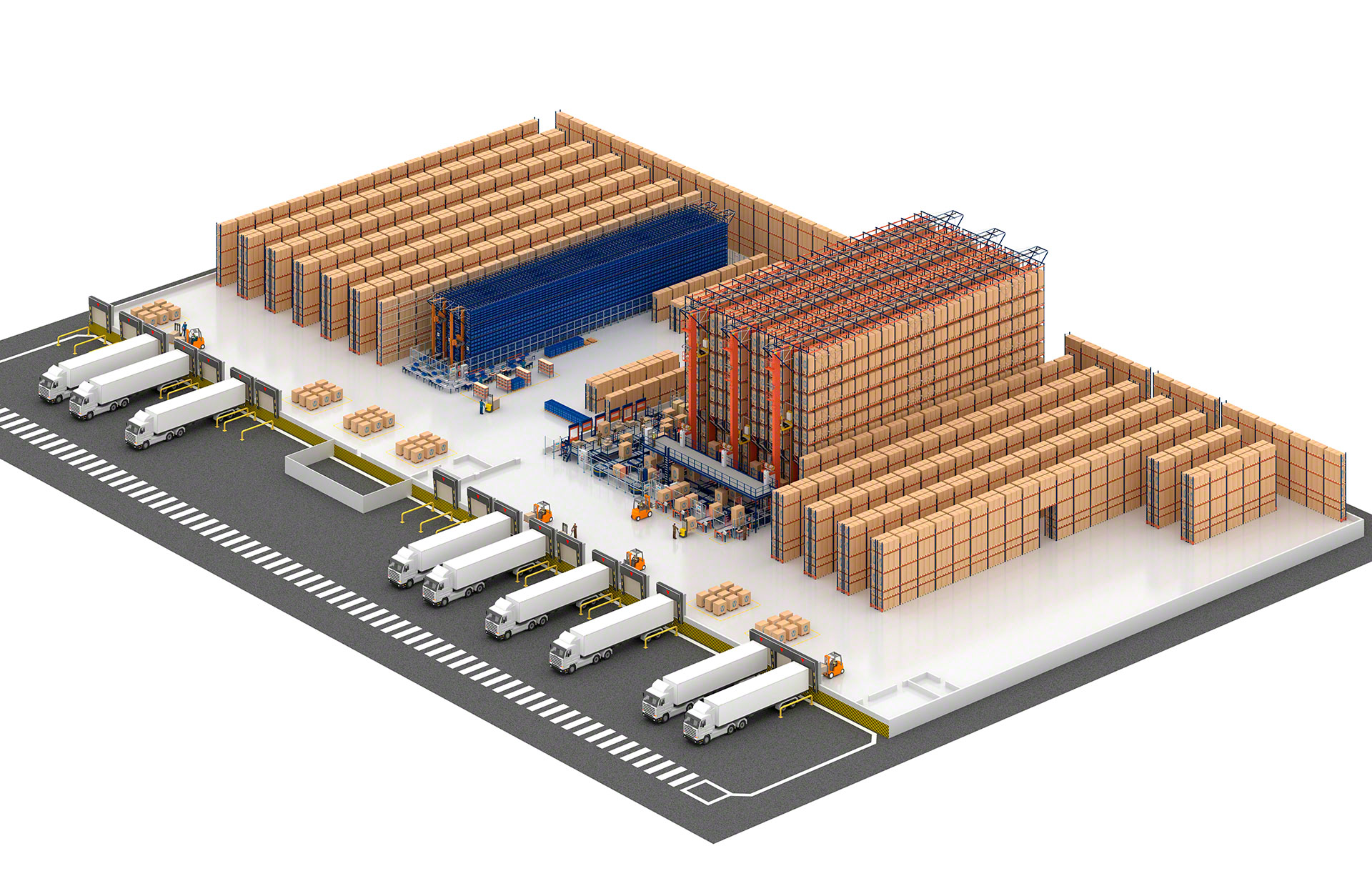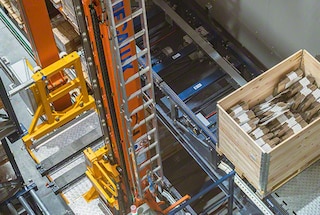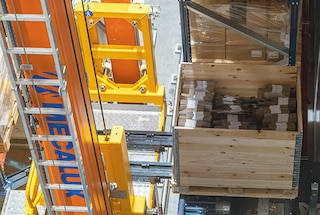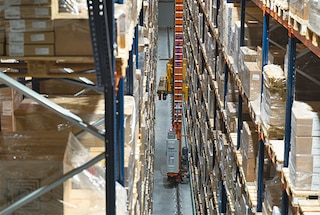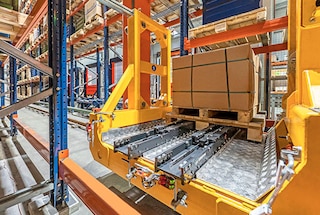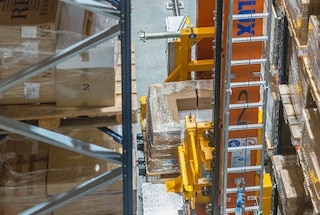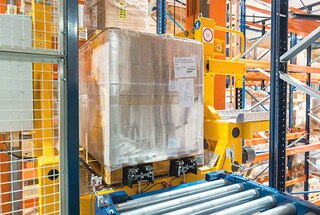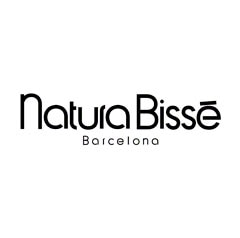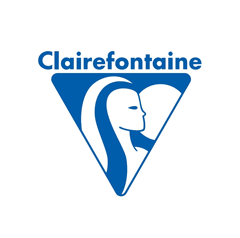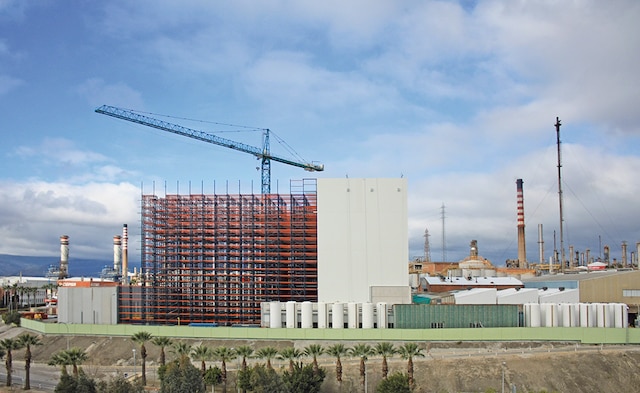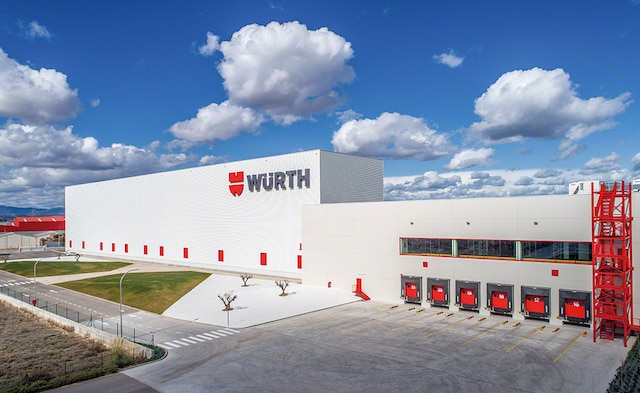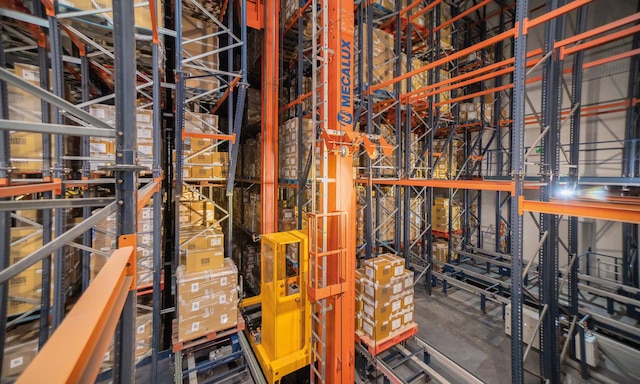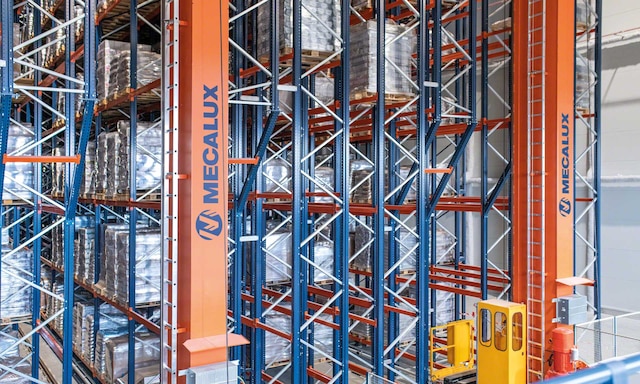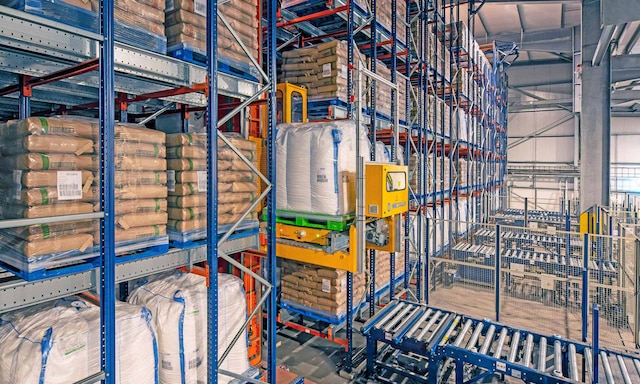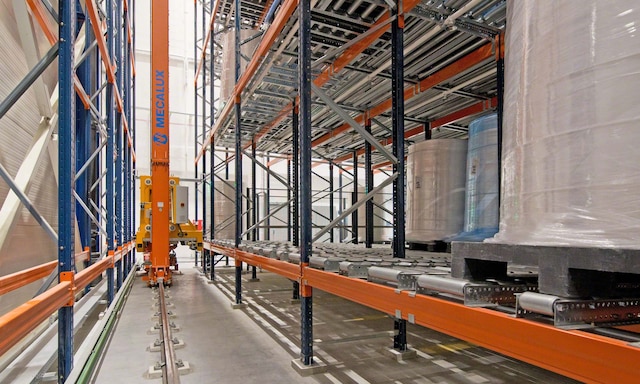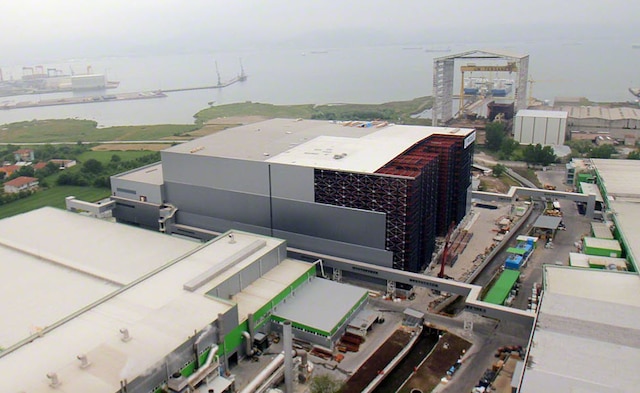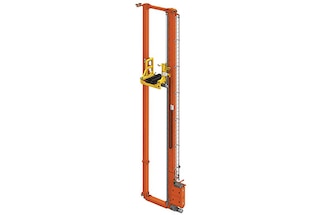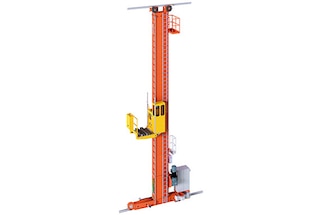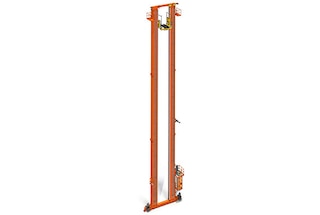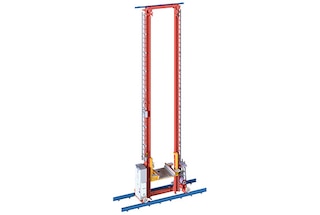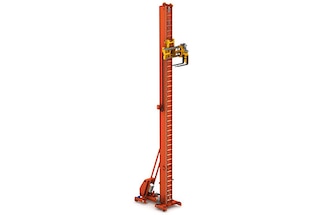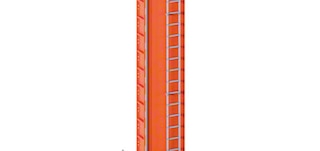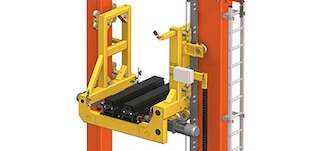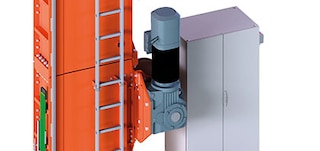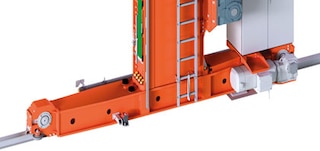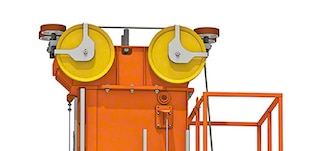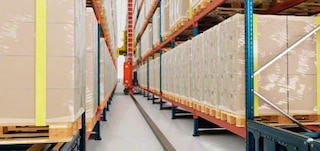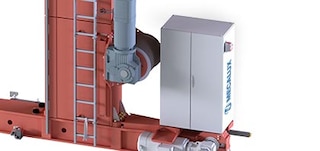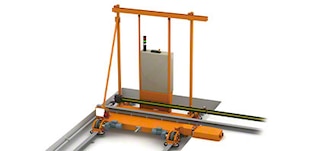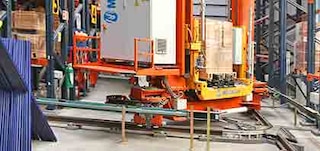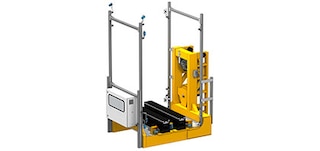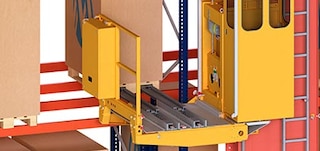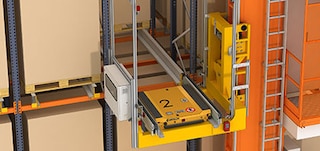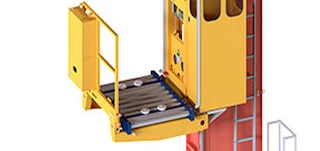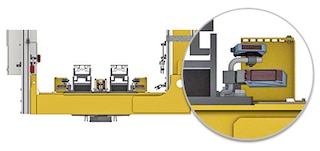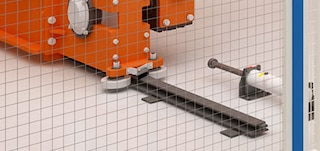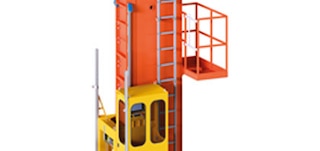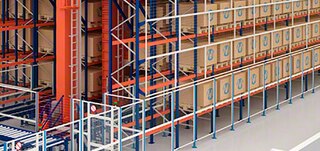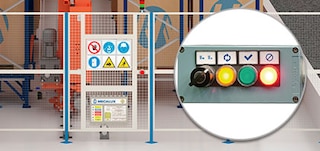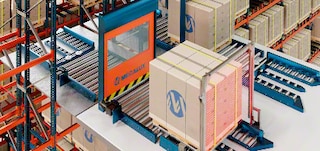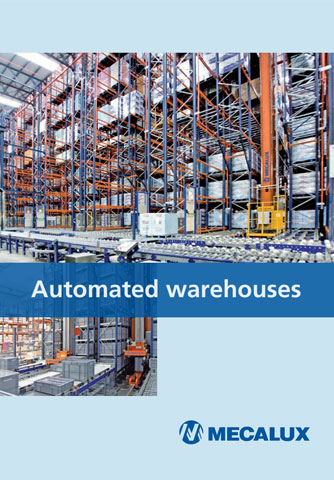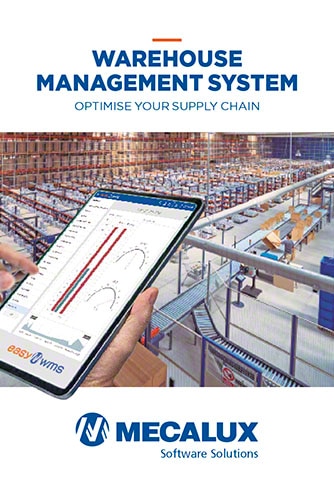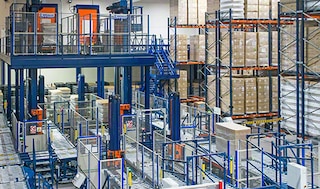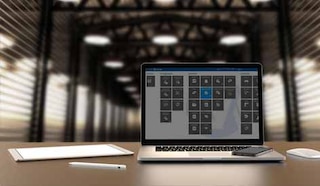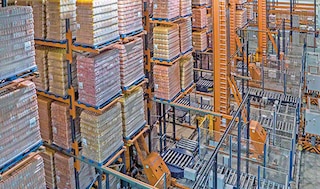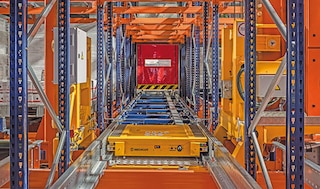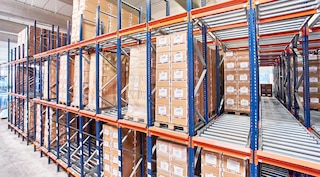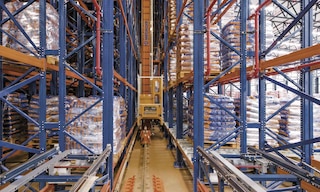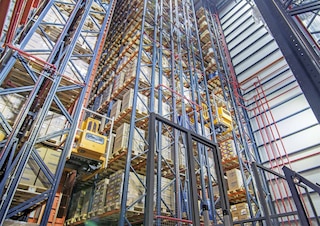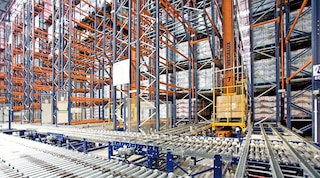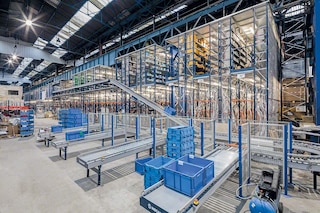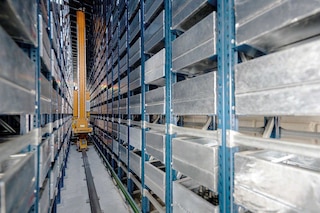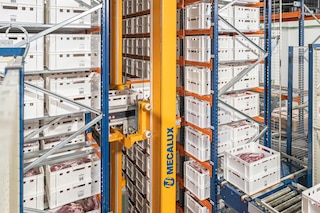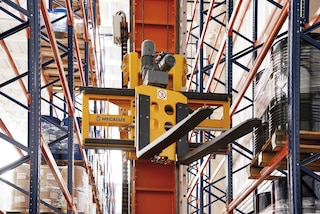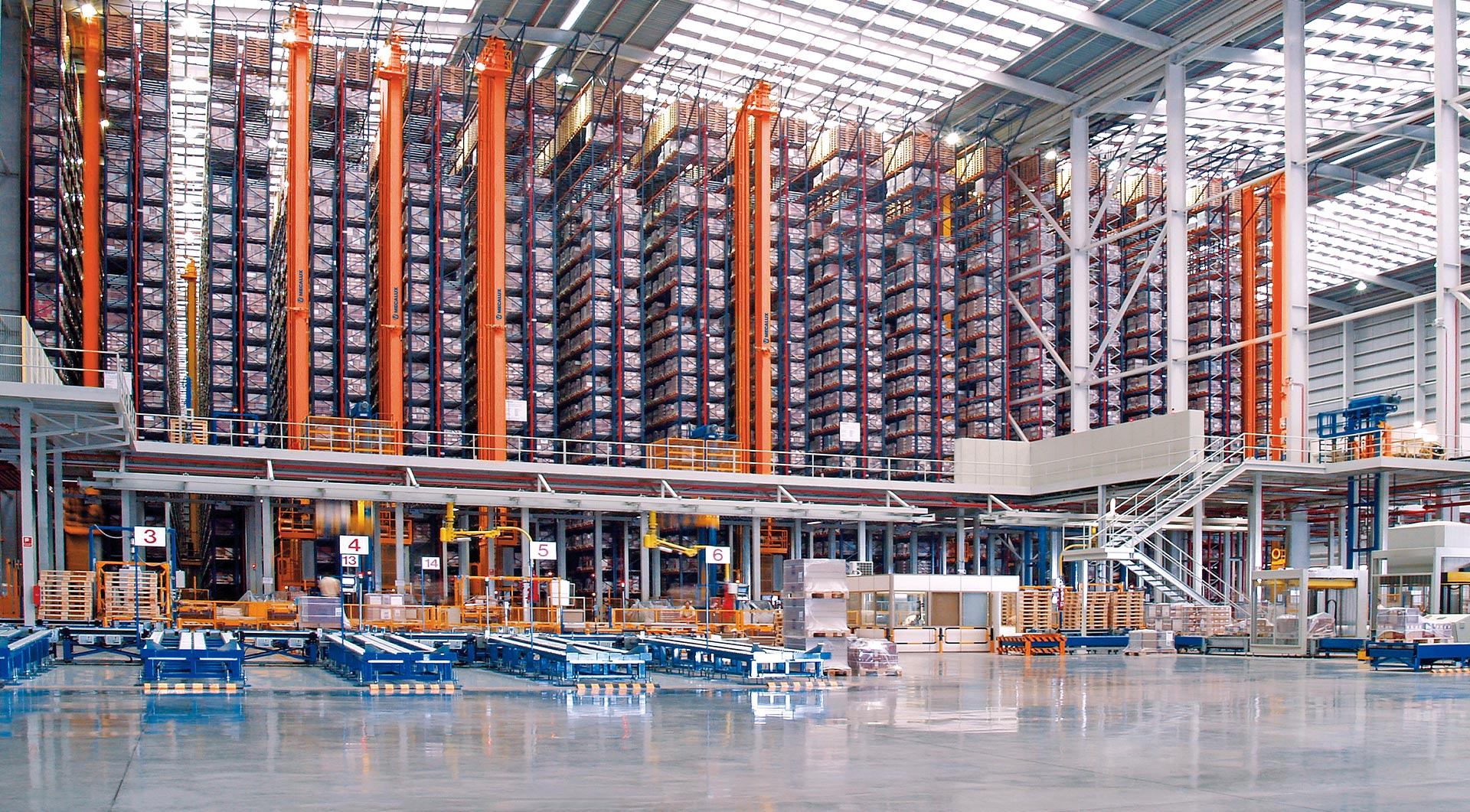
Stacker Cranes
Automated storage and retrieval system (AS/RS) for pallets designed to boost productivity and increase warehouse capacity.
The product
The stacker crane: automated, speedy, error-free storage
Stacker cranes are machines designed to store and retrieve pallets automatically. They move in length, height, and depth to load and unload goods from racking structures in a highly agile, precise manner.
Mecalux stacker cranes are equipped with state-of-the-art technology, significantly increasing warehouse productivity and maximising space utilisation to boost storage capacity. Moreover, they help reduce errors and risks associated with manual operations.
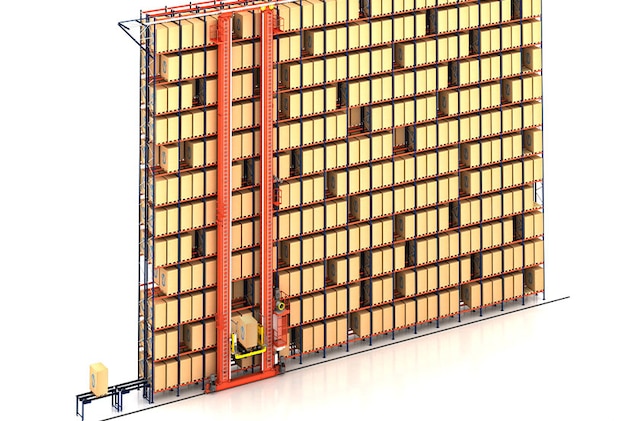
Advantages of stacker cranes in warehousing
- Increased productivity: these machines can run continuously 24/7/365. Storage and retrieval are performed in the same movement (combined cycles), making the system highly agile.
- Total automation: their autonomous operation streamlines warehouse management and eliminates errors linked to manual tasks.
- Maximum space utilisation: stacker cranes can reach up to 45 m high in aisles as narrow as 1.5 m wide.
- Double- and multi-depth: these machines can operate with high-density racking with deep channels — e.g., pallet flow racking or the Pallet Shuttle system — and with single- or double-deep racking.
- High flexibility: Mecalux’s wide range of stacker cranes allows users to tailor the system to their load capacity, height and cycle time requirements.
- Safety: stacker cranes handle pallets with extreme precision. In addition, they significantly reduce handling equipment traffic, enhancing warehouse safety.
- Comprehensive solution: Mecalux designs, manufactures, installs and commissions all AS/RS components. These include the racking, stacker cranes, conveyors, and warehouse control and management systems (WCS and WMS).
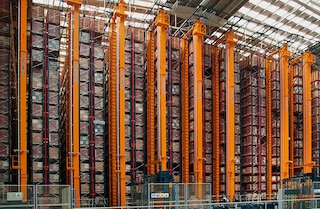
We’ve shortened the time spent on fulfilling and distributing each order
Applications of automatic stacker cranes
High-throughput system that adapts to the needs of different types of warehouses
Mecalux stacker cranes are versatile storage solutions that cater to the needs of multiple companies. They have proven their effectiveness across numerous industrial sectors, including the food, metallurgy, automotive and pharmaceutical industries.
Gallery
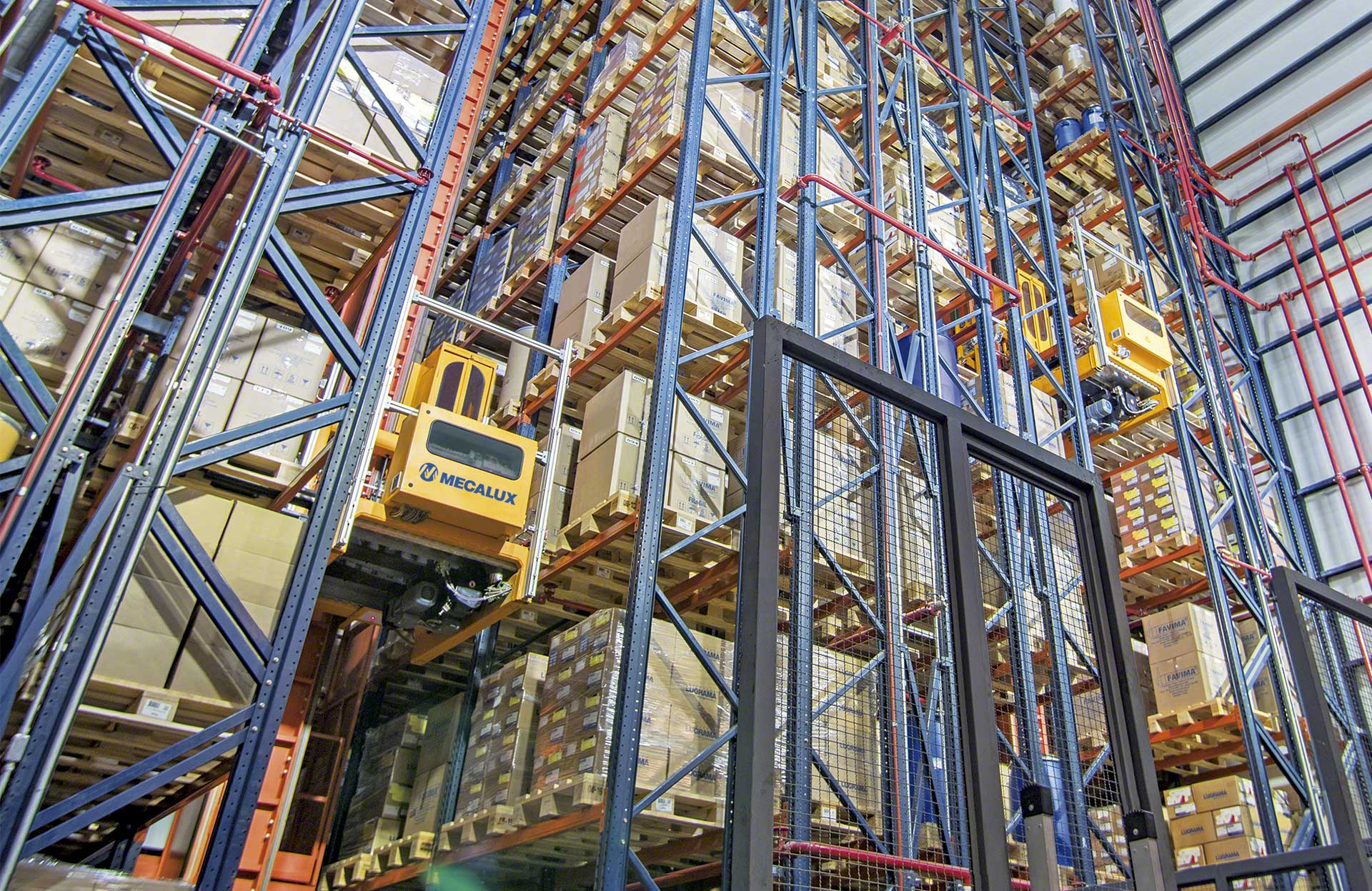
By leveraging available height and operating in narrow aisles, stacker cranes expand storage capacity
How does a stacker crane work?
Stacker cranes fully automate pallet storage and retrieval operations
A stacker crane is a machine designed to perform 3 types of movements: longitudinal (to move along the aisle lengthwise), vertical (to operate at height) and transverse (for the forks to enter the racking depth-wise to deposit or remove pallets).
Testimonials
Case studies
See more case studiesAutomated stacker crane models
Wide range of stacker cranes easily adaptable to specific warehouse needs
Mecalux’s single- and twin-mast automatic stacker cranes cover a broad spectrum of requirements. Thanks to this versatility, there is a suitable model for any load capacity, construction height and necessary cycle times.
Components of pallet stacker cranes
The design of stacker cranes for pallets minimises the forces transmitted to their supporting framework. This prevents damage to the AS/RS racking and structure in the long term.
A stacker crane is a fully automatic high-performance machine composed of various elements. These include masts, upper and lower guide bases, a lifting cradle, an extraction system and a hoisting mechanism.
The extraction system used will vary based on the application, the type of load to be handled, the arrangement of the racking and even the operational requirements. In general, there are 3 types: telescopic forks (single- and double-deep), the Pallet Shuttle and on-board conveyors.
Mecalux stacker cranes are fitted with a set of components designed to maximise the safety of the AS/RS.
FAQs
A stacker crane is a fully automatic machine designed to store and retrieve goods from locations within a racking system.
Automating a warehouse with pallet stacker cranes offers multiple benefits. Among them are increased productivity, safe and reliable operations, error elimination and optimisation of available space thanks to their ability to work at significant heights in extremely narrow aisles. Of course, the initial investment in automatic pallet racking solutions is higher than that of conventional storage systems. However, the increased operational capacity associated with automation and the reduction in operating costs (linked to handling equipment, for example) results in a rapid return on investment.
Mecalux stacker cranes can operate with single- or double-deep racking, pallet flow racking or the Automated Pallet Shuttle system.
Mecalux’s automatic trilateral stacker cranes enable the quick and cost-effective automation of adjustable pallet racking up to 14 m high. That is, these machines can be integrated into pallet racking that was previously operated with trilateral forklifts, all without modifying the racking structure. Automating other types of conventional storage systems, however, requires the replacement of the existing structures in the facility. Mecalux advises its clients on the design and implementation of the AS/RS that bests meets their needs.
Automatic stacking cranes for pallets are primarily used to move palletised loads in storage and retrieval operations. Additionally, Mecalux offers stacker cranes for boxes. Specially designed for miniload systems, these machines handle smaller unit loads such as boxes, trays and even tyres.
Mecalux stacker cranes are configured to operate in three different modes: automatic (the usual operating mode), semi-automatic (for specific and support operations) and manual (for maintenance work). The stacker crane’s automatic mode is used to execute the commands it receives from the WMS software. For instance, it performs storage and retrieval operations, storage position changes and self-learning of AS/RS locations in this mode.
This is not essential in all scenarios. For companies requiring a relatively low turnover of goods but a high storage capacity, one stacker crane could be shared by several aisles. In such cases, aisle-changing solutions (e.g., a curved-track system or a transfer bridge) can be installed to enable the stacker crane to operate in different aisles. Nevertheless, to maximise efficiency in an AS/RS, it’s ideal to use one stacker crane per aisle.
Yes. Stacker cranes incorporate regenerators that transform the energy generated during descent and deceleration manoeuvres into electricity. This electric energy is leveraged by other elements in the AS/RS, reducing power consumption.
Absolutely. In an AS/RS, access to areas where moving equipment (i.e., stacker cranes, conveyors, etc.) operates is appropriately restricted by wire mesh partitioning and secure access doors.
Yes. Every AS/RS requires two software programs. On the one hand, the warehouse management system (WMS) supervises and controls stock and assigns each unit load a location. On the other, the warehouse control system (WCS) is responsible for sending movement instructions to the stacker crane. Mecalux can supply both software programs.
Stacker cranes can operate at heights of up to 45 m.
The maximum load capacity of the stacker crane’s cradle is 1,500 kg for single-deep racking and 1,000 kg for double-deep rack configurations. Stacker crane models equipped with two cradles increase the load capacity to 3,000 kg (1,500 kg per cradle) in single-deep racks and 2,000 kg (1,000 kg per cradle) in double-deep racking.
Stacker cranes can move at a travel speed of up to 160 m/min.
The maximum lifting speed of a stacker crane is 66 m/min unloaded and 54 m/min loaded.
Mecalux stacker cranes can work in temperatures ranging from -30 °C to +40 °C.
Ask an expert

